Are you sure you want to leave the feed?
Oops... something went wrong!
Looking for inspiration? Planning a trip? Or just want to scroll yourself happy? We'll show you an Ireland that's tailor-made for you.
- #Landscapes
- #CultureandHeritage
- #OutdoorActivities


Oops... no internet connection
While offline, you can still add items to My board. New travel reccomendations will only show up once you’re back online.
See what Ireland has in store for you
Items without a physical location are not shown in map view.
Looks like your board is empty
Look out for the little heart icon around Ireland.com. Simply tap the heart to add items to your board!

Board settings
Collection cover image.
Visible to people you share your board with

Share board
Share a link to your My Ireland board and inspire friends, fellow travellers and family. Only you can add or remove items from your board.

Sign in Sign up Forgot your password?
Create an account.
Access My Ireland across all your devices by logging in.
Sign up Not got an account?
Terms of use | Privacy policy
Login Got an account?
Location access
- View offers and deals nearby
- Find travel inspiration based on your location
- Get local weather forecasts and essential information
Enable location access
Location access on ios.
- 1 Open the website settings for this website in your browser.
- 2 Select Location settings.
- 3 Choose Allow.
- 1 Open the My Ireland website.

- 2 Select the icon below.

- 3 Select Website Settings.

- 4 Change Location status to Allow.

Notifications
Travel times.
Tell us when you are travelling to Ireland and we'll show you tailored reccomendations during of your trip.

- Recommended events during your stay
- Helpful travel reminders and updates
You have unsaved changes. Save before leaving?
We take your privacy very seriously and only ever process your data with your permission. If possible this is handled anonymously and we will never store your data for longer than is required. For more information on how we handle your personal data, please read our privacy policy.
Remove data
To securely remove all data associated with your profile, please contact our Data Protection Officer.
Reset your board
This will remove all the items you have previously liked from your board. Please note, you can’t undo this action.
Are you sure you want to reset your board?
- Created date 19 July 2023
Delete account
Sorry you’re leaving. Just a reminder – if you delete your account, you won’t be able to post in Community. And it’s permanent so you can’t undo it in the future.
Delete your account
- No. Keep my account
- Yes. Delete my account

Bringing your pet to Ireland
The importation of pets into Ireland is strictly controlled to ensure diseases such as rabies are kept off of the island

Ireland in your inbox
Sign up to receive free email newsletters from Tourism Ireland, including regular tailored updates on holiday ideas and insider tips.
We will use your email address to send you personalised content straight to your inbox based on how you interact with this website and our advertisements on other websites.
Something went wrong...
Success! Thank you for subscribing to our Newsletter!
I understand that by signing up, I will receive personalised email content based on my use of Tourism Ireland’s website, emails and Tourism Ireland’s advertising on other websites, cookies and tracking pixels. You can unsubscribe at any time by clicking 'unsubscribe' in our emails. Find out more information on "How we handle your personal data" in our privacy policy .
Bringing your pet on holiday with you is fun – they’re part of the family after all. Selected hotels, guest houses and B&Bs happily accommodate pets: the five-star Cliff House Hotel in County Waterford even offers a luxury package specially designed for your pooch. B&B Ireland has lots of members who accept pets into their homes and many self-catering properties are now pet-friendly.
For the enthusiastic dog owner, the possibilities for walks are endless on the island – although remember to keep your dog on a leash at all times as sheep can pop up out of the most unlikely places! During the summer months, country fairs and festivals hold all sorts of dog shows, cat shows and pet races; so if you’re particularly proud of your pooch why not see if they can bring home the gold?

Murlough Bay
County Antrim
For the enthusiastic dog owner, the possibilities for walks are endless on the island
Bringing pets into the Republic of Ireland
Entry requirements depend on where your pet is travelling from .
Travelling from the EU
If you are bringing your pet dog, cat or ferret into the Republic of Ireland from another EU country or from Andorra; Gibraltar; Greenland and the Faroe Islands; Iceland; Liechtenstein; Monaco, Norway; San Marino; Switzerland or the Vatican City State, your pet must:
• Be microchipped (this must be done before anything else)
• Have a valid rabies vaccination
• Have an EU Pet Passport or Health Certificate
• Be treated for tapeworm (dogs only) before each visit, unless you’re travelling from Northern Ireland, Finland, Malta or Norway)
Travelling from Great Britain
If you are bringing your pet dog, cat or ferret into the Republic of Ireland from Great Britain, your pet must:
• Have an Animal Health Certificate
• Be treated for tapeworm (dogs only)
Allow plenty of time to arrange the relevant vaccinations and requirements with your vet before you travel – and don’t forget your pet will need a new AHC and tapeworm treatment for each trip. Find out more at Gov.uk: Taking your pet abroad and Gov.ie: Pet Travel Portal .

Dogwalking at Portumna Castle, County Galway
Travelling from outside the EU and Great Britain
Entry requirements depend on your country of origin. You can find details of the requirements for each country on the Irish Government's Pet Travel Portal .
At a minimum, your pet must:
- Be microchipped (this must be done before anything else)
- Have a valid rabies vaccination
- Have an EU Health Certificate
- Be treated for tapeworm (dogs only) before each visit
- Enter the Republic of Ireland only through Cork Airport, Dublin Airport, Dublin Port, Shannon Airport, the Port of Cork at Ringaskiddy or Rosslare Europort and must undergo compliance checks on arrival.
Pets coming from certain countries may also need to have a blood test after the rabies vaccination at least three months before entry.
Advance notice: If you're entering Ireland from a non-EU country you must arrange in advance to have a compliance check carried out on your arrival. You can find contact details to make these arrangements on the Pet Travel Portal .

Castlewellan Forest Park, County Down
Bringing pets into Northern Ireland
Dogs, cats and ferrets from certain countries or territories can enter Northern Ireland without quarantine provided they meet certain criteria.
Northern Ireland is part of the EU Pet Travel Scheme so you can use a pet passport issued in an EU country, including the Republic of Ireland, to bring your pet into Northern Ireland. Your pet will need to:
- Have an EU Pet Passport or Health Certificate
- Be treated for tapeworm (dogs only) before every visit
Great Britain is outside the EU Pet Travel Scheme so there are different rules around bringing your pet to Northern Ireland from Great Britain. Before you travel, you should check the Northern Ireland Government website or Gov.uk: Taking your pet abroad to make sure you adhere to the latest requirements.
Entry requirements depend on your country of origin. You can find details of the requirements for each country on the Northern Ireland Government's website .
- Have an EU Health Certificate confirming microchip and vaccinations
- Enter Northern Ireland only through Belfast Port, Belfast International Airport, Belfast City Airport, City of Derry Airport or Larne Port and may be required to undergo compliance checks on arrival.
Travelling within the island of Ireland
Pets travelling from the Republic of Ireland to Northern Ireland or vice versa should be microchipped, vaccinated against rabies and meet any additional requirements. They must also be accompanied by either a valid Animal Health Certificate (Great Britain residents) or an EU pet passport.
Getting here: transport and your pet
It's up to each individual airline to decide whether to carry your pet in the cabin or as excess baggage and each ferry operator has differing rules on travelling with animals. Always check with your transport company before you travel to confirm their requirements for transporting your pet.

Bringing a Dog to Ireland from the USA, a Detailed Guide [by a local]
Disclosure: This article contains affiliate links and is a member of Amazon Services LLC Associates Program, meaning when you make a purchase, I earn a small commission. Affiliate links cost you nothing to use, and help keep my content free. It’s a win-win for us both! For more info, see the Privacy Policy
Have you been wondering about bringing a dog to Ireland from the USA?
Bringing a Dog from the United States to Ireland can be challenging. There are a lot of logistics to figure out from the paperwork to navigating the flight.
Thank goodness we have a helpful guide created by someone who has tons of experience making this journey. Jennifer has traveled often between Ireland and the US with her 5 pets including her dog Zoe.
Now she put what she has learned into a fantastic guide! She has a number of pro tips that you may not have thought of before. Keep reading to learn more about bringing a dog to Ireland from the USA.
We moved from Texas to Ireland and go back to the US to visit with our smallest (19 years young!) doggo, Zoe.
I thought I would write a post about our trips to Dublin for those that are interested in trans-Atlantic traveling with a pet in the cabin and have anxiety about the unknown like myself! I tried to put as much detail as possible.

Zoe the Irish-American Chihuahua
Zoe is a 19-year-old Chihuahua
Zoe moved from Austin, Texas to Ireland with her owner Jennifer Dundee Reeder.
Zoe was a regular pet traveler in the US and has continued to fly internationally.
Jennifer has spent many years working at a veterinary hospital, so she knows a lot about making sure pets are healthy and safe.
Can I fly my dog to Ireland with me?
Yes, you absolutely can fly your dog and cat to Ireland with you!
If you are bringing a pet to Ireland from the USA, you need to comply with certain requirements including proof of rabies vaccine connected to your pet’s microchip. Additionally for Ireland & UK (but not all EU countries), a required tapeworm treatment. If you are traveling to the EU for the first time or on holiday, you will also need a USDA-endorsed certificate from your vet to enter the EU.
How to Travel with My Dog to Ireland
Dogs and cats can both fly to Ireland from the United States. Depending on the size, the pet may fly in the cabin or under the plane.
If you have traveled to Ireland or anywhere else, share your story to help fellow pet travelers and stamp your Paws Passport .

Traveling between US and Ireland with a dog in cabin
Since Zoe is only 5lb/2kg she is quite tote-able and can travel with me in the cabin .
We fly Delta, we find them to be the most pet-friendly in-cabin airline. Zoe flew frequently with us domestically in the US before our move to Ireland.
Pet Reservations with Delta Airlines
You cannot add a pet to your flight reservation online with Delta, you must call customer service. You can book a ticket and then call, or just call reservations and book, adding your pet at that time
Pro Tip: Sometimes the reservations line wait times are shorter.
Pet airport check-in
You cannot check-in online or through the app when you have a pet, you must check in at the counter, so allow extra time.
We check in at the “special needs” line at Delta. The customer service counter person will check the Rabies vaccine and give you a bright green “Delta Authorized” tag for your bag .
They may not let you board without this tag, so make sure they give you a receipt, boarding pass or tag for your pet before you leave the desk!
Cost for flying with a pet on Delta Airlines in-cabin
The fee is $200 each way at the time I’m writing, payable at the time of check-in.

Delta Air Lines’ pet carrier requirements
The max dimensions for your pet’s travel bag are usually noted on your airline’s website. No one has ever measured Zoe’s bag, but for Delta, it is 18″x11″x11″ .
That size slides nicely under the seats.
No one on any of our trips has ever checked if Zoe can stand up or move around.
We smush her dog bed in there with her, so not really. She’s not super mobile anyway, so it’s never been a concern for us. We are more worried that she is warm and comfy when she snoozes.
If your dog isn’t crate trained or is struggling in the bag, they might have more to say about it.
Going through airport security with a pet
You do have to carry your pet through security outside of their bag, so if you have a darter or cat, make sure you have a harness already.
How do I prepare my dog for a 10-hour flight?
The path we take from the US to Ireland is Austin – JFK – Dublin. It’s a long journey, but we have developed a strategy that works for us.
Feeding and Potty Breaks
Zoe *refuses* to use the pet potty rooms at airports . I mean REFUSES. So we have come up with this system.
We keep her out of the kennel as much as possible prior to the flight.
What works for us is this:
✅ Feed her early (6-7am) ✅ Schedule our flight for late morning (10-12pm). ✅ We go ahead and feed her a full meal because she will poop right after she eats usually and then sleep. (Old dog things). ✅ We also take a small, collapsible bowl in case she demands water. Keeping them hydrated is important, but since bathroom breaks aren’t easy, use your best judgment. ✅ We try to get a 3-5 hour flight for our first leg, so Austin to JFK is great at close to 4. This seems short but with parking/check-in/security/take-off delays/de-planing, by the time we arrive, she’s been in her bag for a good 7-8 hours. ✅ We try to have a 3+ hour layover whenever possible. We first always still attempt to let her potty in the pet area. Still a no. So we go and find a semi-free corner in a gate area and build her a little playpen with our carry-ons. We put down a potty pad or 2, and water. She walks in circles for a few mins and then *potty time*.
On one flight she would NOT settle and my husband took her to the bathroom with a potty pad and she randomly needed to pee.
Bringing dogs on a plane
During the flight, she is mostly silent and sleeping. Most flight crew never even realize she’s on board.
Pro Tip: We have found taking snacks that crumble into her bed so she kind of has to root around for them helps keep her quiet in case she is jostled awake by bumps.
We have sneakily removed her from her bag and held her before and have about a 50% success rate with the flight crew that thinks she’s adorable and 50% that ask us to keep her in the bag. I don’t know that this would generally be allowed, but we got away with it. It helps that she’s very small and can hide under a strategically placed sweatshirt.
We have also done the trick (when I was a much more anxious flier) of giving the flight crew Starbucks gift cards or small treat bags with a little Thank You from Zoe. This generally bought us some goodwill in case she got fussy. But we are much more confident in her behavior now and haven’t done this in a while.
Is sedating my pet for a long-haul flight a good idea?
A lot of people ask about meds or sedation. Most airlines will require you to sign something stating your pet is not sedated.
Personally, having many many years of working in veterinary hospitals, I would agree. The health risks are not worth it. I am always anxious that someone will be bothered by Zoe whining or barking, but she rarely does and when it happens the white noise from the plane drowns her out AND 98% of people wear headphones on planes now anyway.
The most trying time is when they serve hot food. Zoe is NOT happy being in a bag locked away from all the food, so we usually pre-empt the rolling cart of chicken smells with a few treats.
The mental after-effects for your pet in being anxious but unable to move normally because of sedation like acepromazine can dangerously raise their heart rate and cause issues afterward.
That being said, Zoe already takes gabapentin and CBD for her arthritis and it usually chills her out for a while after she eats. So, use your best judgment and consult with your vet.
Pro Tip: Some people thoroughly exercise their pets before flights. I am not a huge fan of pre-flight cardio because it can dehydrate them or make them gulp water and then need to pee. The better idea is mental stimulation – lots of sniffing, gentle play, hide and seek, puzzle games, etc. This tires them out mentally, makes them more likely to snooze longer, and reduces anxiety.
Airport Layovers with our furry friends

We try to have a 3+ hour layover whenever possible. While this seems like a LONG time to spend at the delightful JFK, we have found it actually works in our favor.
✅ We go and find a semi-free corner in a gate area and build her a little enclosure with our bags. ✅ Zoe will eat, poop, and walk in circles for a few more minutes, then be ready for bed. ✅ Then we pack up and find some food for ourselves. ✅ If we have extra time before our flight, we camp at our gate and let her walk around in her playpen again. We try to keep her walking and awake as long as possible before we board for Ireland. ✅ She is very shaky when walking at this point so a leash is not a great option for her. If your dog is larger or more mobile you may not need these extra steps, they can just walk with you. But we had to improvise for our special needs girl! We try to find out-of-the-way spots for us to camp in, but no one has ever bothered us before.
Is it safe to fly dogs in cargo?
When we moved from Austin to Dublin, I hired a pet relocation company based out of Austin, Pets With Passports , to help coordinate our 5 animals. The relocation company was wonderful by the way. My 5 pets all flew cargo at the same time together .
What do I need to take my dog to Ireland from the USA?
The USDA APHIS states you will need proof of Rabies vaccine, microchip and additionally for Ireland & UK (but not all EU countries)- a required tapeworm treatment. This must be administered at the vet, no more than 5 days prior to landing at your final destination.
Rabies Vaccine
A receipt for the Rabies vaccine from your vet is not enough, you will need an endorsed certificate that have your pet’s microchip listed.
Many say they need to be signed in blue ink, not black … but I have never been stopped or had a cert questioned with a black ink.
Many vets have computer-generated signatures on these forms now, and customs seem to accept this. If you are concerned, make sure to note to your vet beforehand so they can print and sign additional certs for you without the computer signature. I would request 2 copies. (Never hurts to have an extra on hand!)
It is important for the rabies vaccine to be recorded with the microchip number, so you will want to get the microchip before the vaccine.
Tapeworm treatment
The UK and Ireland have an additional requirement of a tapeworm treatment that is not required by most of the EU countries
This must be administered at the vet no more than 5 days prior to landing at your final destination.
Pro Tip: I worked at a vet for years and my preferred time frame is 2 days prior to flying . This is because even if your pet has no worms, the meds can cause tummy upset the next day or so after administering and flying with vomiting and/or diarrhea-having dog is no one’s idea of a good time. But doing it at 4 or 5 days runs the risk of concern with a canceled or reschedule flight bumping you out of your 5-day window. So 2-3 days out is my preference!
If you are an EU resident (like I am), the vet just records the date and time administered in her pet passport.
As an American traveling, I would pre-type out a letter stating
“I have administered __ med at __ dose to pet known as __, microchip # __ traveling with __, on _date_ at _time_.”
Have the vet write and sign the letter. Get them to put a stamp from their clinic (they all should have one) with their contact info phone/address etc. Keep this signed letter with the receipt from the tapeworm visit.
Again, the medication must be administered by a vet at the office, don’t let them send you home with it, and the receipt alone may not be enough.
Health certificate – USDA endorsed
Bringing a dog to Ireland from the USA : If you are traveling to the EU for the first time or on holiday, you will also need a USDA-endorsed certificate from your vet to enter the EU.
There is a high cost associated with it usually, but be kind to your vet! It is a laborious process and they are liable if even the smallest detail is wrong.
You will need to travel with 2 copies, as sometimes customs likes to take the original.
The USDA certificate must be signed by YOUR vet and a second USDA vet .
The exam for the health certificate by your vet can be done up to 30 days prior to travel .
The USDA must endorse it within only 10 days . This is the most stressful part, truthfully.
The USDA prioritizes based on flight dates, so sometimes you will only receive it 1 or 2 days prior to flying. *stress*. You can call and check with them if you are freaking out. But remember if your departure point to the airport is not your house, the certificate/FedEx has to track you down – so keep that in mind when traveling!
Pro Tip: A great thing to do is ask your vet if they do many travel certificates. Vets that have experience with this timing tend to have the process down a bit more efficiently than vets who rarely do them. Vets physically nearer to international airports are generally better at these! Not just any vet can sign, they must have a special certification- so check that as well!
What Happens Once We Arrive at the Dublin Airport With My Pet?
“advanced notice” to the irish airport authorities.
Prior to your arrival in Dublin, you must contact the Port Authority and schedule a compliance check.
They are open 7 days a week 9 am to 7pm. If you land outside those hours, it’s a bit more complicated so I would advise trying to find a flight that complies.
You just email them at [email protected] and they will send you a link to a simple form to fill out with your pet and flight info, scan and send back.
You should try to give them 7-14 days notice. If your flight changes, make sure to update them ASAP. They have your flight#, so will know if it’s cancelled, but still email them and let them know your new schedule.
Local Tip: I will say for Dublin in particular, the national slogan is “It’ll be grand.” Everyone is very easy going and I’ve yet to meet anyone who is out to find errors or reasons to tell you NO. This country loves to be chill and helpful, so don’t be stressy when traveling here! I print out and keep a copy of the confirmation email for the Compliance appointment you receive after submitting your form. Sometimes the airline reps will ask to see it.
Immigration and Customs for pets at the Dublin Airport

Dublin Airport actually has American customs in Ireland, which is unusual (unique?).
The customs agents have never looked at or asked for her paperwork before. They usually just want to give her a pet. So we usually breeze right through. Also, we have Global Entry so this might help. But because it is within their purview to do so, make sure to have the paperwork available.
When you arrive in Dublin, you first go through border control where they check your passport/visa etc. I’ve never been asked about her there before or they’ve never noticed her.
Then proceed to baggage claim. Right by baggage claim there is a sign for the Agriculture department . Usually, the door is open and they are waiting. If not, there is a phone there, just pick it up and it’ll ring the duty supervisor.
While my husband fetches the bags, I check Zoe in.
They scan her chip and check her passport and tapeworm dates. Usually, they make a copy of her docs and then charge you €50. They don’t take American Express.
If your pet has flown cargo , this is the same area they will be delivered to from the plane.
Mostly the process takes a good 10 minutes if everything is in order. If you leave the airport without the Compliance check, you are in trouble – so don’t forget!!
Absolutely, Ireland is generally considered a dog-friendly country. Many Irish people love dogs and there is a significant culture of dog ownership in the country. The cities, towns, and countryside are replete with parks and walking paths, which make for great dog walking areas. Moreover, many pubs and restaurants, especially those in more rural and tourist-heavy areas, allow dogs, particularly in their outdoor seating areas. In terms of public transportation, dogs are permitted on trains in Ireland, provided they are in a carrier or on a leash. However, rules may vary for buses and trams, with some only allowing small dogs in carriers, while others may not allow dogs at all, except for guide dogs. You can read more about people’s experiences with their pets in Ireland
You can visit a vet in Ireland and get your pet a passport to travel onto the UK or EU if you like, but do not need one to return to the US. To get from Europe to the US with a pet, it is quite simple. You just need a copy of your pet’s current rabies vaccine with microchip notation. Do not purchase a pet passport online from the US. Those are not valid for entry into Ireland nor for returning to the US. You can only get an EU Pet Passport in the EU and the entries need to be completed by a vet licensed in the EU.
You can not take your dog from anywhere outside the EU into Ireland without the official government paperwork. This includes rabies vaccine, health certificate, and tapeworm treatment. However, in the US, this document is not called a “pet passport”. If you are traveling within the EU, an official EU Pet Passport is useful.
Yes, dogs are allowed at Dublin Airport, but they must be kept in a secure, airline-approved carrier at all times, unless they’re assistance dogs. For travel, dogs must typically go in the cargo hold, except for small dogs on some airlines and certified assistance dogs. It’s crucial to check with your airline for their specific pet policies before arriving at the airport. Note that for international travel, pets must meet country-specific regulations, which often include official documentation.
Every airline sets its own prices for the cost of flying a pet. If the animal goes in the cabin, expect to pay between $100-$250. If the pet is flying cargo, there are so many variables including the pet’s weight, the airline, and whether a shipping company is used. Charges will easily be over $500 per pet and possibly into the thousands.
In April 2023, Stena Lines Ferry announced they will be providing some pet-friendly cabins on Irish routes.
Final Thoughts: Bringing a Dog to Ireland from the USA
Thanks so much to Jennifer Dundee Reeder for sharing the ins and outs of bringing a dog to Ireland from the USA. Sure, it might seem a tad bit overwhelming at first, but trust me, it’s not as scary as it sounds. Just remember your to-dos: get the right vaccines, don’t forget that tapeworm treatment, and get those necessary documents in order. Oh, and let’s not forget – keep your fur baby comfortable during that long flight. After all, a snoozing pooch equals peaceful travel, right?
Once you’ve got all that sorted, you’re all set for a grand Irish adventure with your best fur friend. So, grab your pooch, pack those bags, and get ready for the Emerald Isle.
Trust me, it’s going to be a blast! And remember, when in doubt, just think “It’ll be grand” – because, really, it will be.
Resource Guide for Travel with a Dog
🧳 What’s the best carrier for my dog when traveling?
You need different carriers for different types of travel
This is my favorite carrier for a small dog – Sleepypod Air
This is my favorite car harness for medium-large dogs – Sleepypod Clickit
This is the best for a large dog on a plane – Skymate Kennel
This is my favorite backpack for a small-medium sized dog – Mr. Penuts Tahoe
You can read more about my r eview of types of dog carriers for travel here .
🏨 What’s the best site to find cheap pet-friendly hotels?
To find cheap hotels, I recommend Expedia
Vacation Rentals are often the best option for people with pets VRBO
Stay for free or have someone watch your pet with Trusted Housesitters!
—–We love traveling and we love our dogs
It’s not always easy to combine the two especially when that means getting on flights or crossing borders. We brought our first dog from Kenya to California, and a few years later she went with us to Ecuador before returning to California where we settled down for a while. Now we are gearing up for a new adventure as we look to bring Sam and Denver on our next global journey. This site is a gift of love to my dogs and to others who love their pets so much, they can’t imagine leaving them behind
Similar Posts

Dog Friendly Traverse City, Michigan: The Insider’s Guide
Is Traverse City, Michigan a good place to visit with my dog? Welcome to Up North, a great place to bring your dog on vacation in Michigan. Traverse City is…

Ferry From Port Angeles to Victoria with My Dog
Can dogs go on the ferry from Port Angeles to Victoria? I took the ferry from Port Angeles to Victoria with my dogs. I needed to get from Washington State…

Dog Park at Dog Mountain: Celebrate Life With Your Pet
Have you thought of visiting the dog park at Dog Mountain in St Johnsbury? I hope you do. It is one of the best places to both mourn the pets…

Dog-friendly Washington DC: Great Pet-friendly Things to Do at the Capitol
The Washington DC region ranks as one of the most dog-friendly cities in the US. If you are visiting, it is a fantastic place for both you and your dog….

The 14 Most Dog Friendly Cities in the US
Have you been wondering about the most dog-friendly cities in the US? If you are trying to find the best place to visit with your dog in the US, the…

Animal Health Division
Entry Requirements for Ukrainian pets from 01 July 2023
Bringing your pet into Ireland
Use the information portal below to find out the requirements your pet must meet to enter Ireland.
www.pettravel.gov.ie
Please note the portal will not work if opened in Internet Explorer.
The Department of Agriculture, Food and the Marine has no objection to the carriage of pets (cats or dogs when accompanied by their owners) in the cabin of the plane or as excess baggage when travelling on airlines. However, the ultimate decision on where in the plane an animal travels is up to the airline concerned. All pets entering Ireland must be in full compliance with the EU Regulation 576/2013 as outlined on this website.
There is no ban/embargo on pets entering Ireland.
Your pet must arrive in Ireland with you, or within five days before or after you travel, if it is accompanied by a person authorised by you. Your pet must be accompanied by original paperwork.
Bringing your pet dog -travelling with guide and assistance dogs
Airlines operating within the EU are obliged to allow disabled passengers and those with reduced mobility to bring their recognised assistance dogs in the cabin of the plane. All service or assistance dogs travelling must be fully compliant with the rules for entering Ireland as set out in section 2, gov.ie - Pet Travel (www.gov.ie)
Pets from non EU countries (apart from the European countries or territories listed above) may only enter Ireland through:
• Cork Airport
• Dublin Airport
• Dublin Port
• Shannon Airport
• Ringaskiddy port, Cork
• Rosslare Ferry Port
It is a matter for airlines whether or not they will allow animals providing other types of assistance/services, such as emotional support, to accompany passengers in the cabin of the plane.
If you are travelling from a non-EU country, you MUST provide advance notice of your intention to bring your service dog into Ireland, at least 24 hours before your departure time.
Please see the sections above gov.ie - Pet Travel (www.gov.ie) on the requirements to enter Ireland and how to book a compliance check.
Transiting Ireland with pet cat, dog or ferrets
If you are transiting Ireland from a non-EU country on the way to another EU country, it may be possible to arrange for the compliance check to be carried out in Ireland, provided the animal is travelling in the cabin of the plane with you and the compliance check can be facilitated at your point of entry.
If you wish to enquire about this, please contact the relevant port of entry by email (found in previous sections), providing the relevant details. A DAFM official will inform you if it is possible to accommodate the compliance check.
You should keep all paperwork with you for the duration of your time in the EU, in case you are asked to present it on entry into the EU country which is your final destination.
The checks can also be carried out in the EU country that is your destination, if they cannot be facilitated in Ireland.
You may transit Ireland with your pet only if:
• the animal complies with the EU rules for pet travel, and
• you have a compliance check arranged in Ireland or in the country of destination
Pets not compliant with EU rules on pet travel must NOT disembark the aircraft in Ireland.
Bringing your pet dog, cat or ferret into Ireland by private transport (aircraft/yacht)
The Department of Agriculture, Food and the Marine may facilitate the landing of pets into Ireland by private transport, where possible. Cats, dogs and ferrets must comply with the rules for pet travel as outlined in sections above.
Pets from non-EU countries must enter through a designated Travellers Point of Entry (TPOE) after providing advance notice and undergo a compliance check on arrival. TPOEs are:
- Dublin Port
- Dublin Airport
Rosslare Europort
- Cork Airport
- Ringaskiddy (Cork) Port
- Shannon Airport
You must contact the TPOE of entry in advance ask if an arrival on private transport can be facilitated. The Department generally cannot facilitate the entry of private yachts with pets into TPOEs, where pets have been in non-EU countries.
The UK’s departure from the EU has resulted in a change in the rules for pet travel between Ireland and the UK. Please click here for further information.
Who to contact
Email address: [email protected]
- Telephone No. from within Ireland: 01 607 2827
- Telephone No. from outside of Ireland: 00 353 1 607 2827
Travelling or relocating out of Ireland with your pet
Travel to other eu countries:.
For information on the pet travel pages of other EU countries please see here
For dogs, cats and ferrets the rules are largely the same to enter other EU countries as to enter Ireland: microchip, pet passport, rabies vaccination and waiting period. There is no tapeworm treatment required to leave Ireland, but you will need to visit a vet abroad to get tapeworm treatment for a dog to return to Ireland, see section 2 on returning gov.ie - Pet Travel (www.gov.ie) .
Travel out of the EU:
If you are travelling on holiday or relocating with your pet out of the EU you will need to:
- contact the destination country for entry (certification) requirements – Ireland does not keep this information
- when the country of destination has provided you with details on the health certificate requirements, please follow their instructions. The most likely scenario is that you and your private vet will prepare the pet (vaccinations, blood tests etc.) and provide a health certificate, that you can then bring to your local Regional Veterinary Office to get a government stamp and signature
- make sure you plan well in advance and contact the Regional Veterinary Office at least 2 months in advance of travel to ensure that necessary documentation can be certified by department officials
- allow sufficient time to ensure any required tests can be successfully performed
- ensure your pet qualifies to return to Ireland, see section 2 Bringing your pet dog, cat or ferret into Ireland – the same rules apply to re-enter from a non-EU country whether the pet is usually resident there or if it is an Irish pet who was just there briefly on holidays
The department may not be able to sign documentation for your pet to travel if you have not contacted your Regional Veterinary Office at least two months in advance of travel with your pet.
It is up to each individual airline as to if and how they allow pets to travel in their aircraft. Please note that from July 19th 2021, Dublin Airport Authority (DAA) are no longer allowing Pets to travel outbound as excess baggage. Please contact DAA directly for more information.
If you are taking your dog, cat or ferret out of Ireland to another EU country, or if you are returning to Ireland, you must get an EU pet passport. In Ireland this is issued by your local vet; please contact them directly.
Pets returning to Ireland from holiday must meet the requirements for entering Ireland from that country, as if it was a pet from that country. Please read sections above carefully and prepare your pet for return to Ireland BEFORE you leave .
If you are travelling to sell your pet dog, cat or ferret, for a change of ownership, or if the pet is not travelling with you or within five days of your travel, there are different rules. Please contact [email protected] , or your local RVO
Bringing an unaccompanied pet cat, dog or ferret into Ireland
If any of the following situations apply to you:
• you are buying a dog, cat or ferret abroad and having it shipped to Ireland unaccompanied, that is, you are not going to collect it and travel home with it, or
• your pet is in another country and you want to have it shipped to Ireland unaccompanied, that is, you are not going to collect it and travel home with it
• you are travelling to Ireland to buy, sell or gift a dog, cat or ferret, or if any change of ownership is involved after arrival, including delivery of a purchased or rehomed animal
• if you are travelling with more than 5 pets (the exception is if you are travelling for a dog show/competition, and you will need to provide written confirmation [email protected]
your pet may not enter Ireland under pet travel rules. These pets must follow a different set of rules.
Please see the following page gov.ie - Commercial Dog, Cat or Ferret Movements (www.gov.ie) .
Information for Vets
- Brexit Information and information on transcribing from GB pet passports or health certificates.
Transcribing details from Health Certificates into EU Pet Passports
- Approved EU rabies serology labs
Instructions for Completing EU Pet Passports
Pet Passports - Information for PVPs
Pet Passports - Advice on Rabies Vaccine Immunity Periods
Bringing your pet rabbit, rodent, bird, reptile or amphibian
Contact details, pet travel - for general queries only ( not to book a compliance check ), pet movement - dublin airport, pet movement - dublin port, pet movement - cork airport, pet movement - shannon airport, pet movement - ringaskiddy port cork, lissenhall vet. hospital, vets direct, pet dog and cat export to australia.
Please see the Australian government website (links below) for all information – below is provided for additional information only. The Australian authorities set the rules to enter Australia and should be consulted for any questions re eligibility etc.
- Step by Step guide to Australian dog exports on Australian gov website Group 3: step by step guide for dogs - DAFF (agriculture.gov.au
- Step by step guide to Australian cat exports on Australian gov website Group 3: step by step guide for cats - DAFF (agriculture.gov.au
- Please contact your local RVO to enquire about the identity declaration. This cannot be arranged through the Live Trade office. Please note this can only be performed for Irish dogs travelling from Ireland to Australia.
- Identity Check: Please contact your local RVO to enquire about the identity declaration. This cannot be arranged through the Live Trade office. Please note this can only be performed for Irish dogs travelling from Ireland to Australia.
* RNATT Form for Ireland:
RNATT Form for Ireland
Rabies Neutralising Antibody Titration Test. This form can be completed by your vet and then brought to your local RVO for signing.
- EU Approved Serology labs for rabies
- Health certificates to be used for pet dogs and cats travelling from Ireland to Australia ON OR AFTER DECEMBER 1ST 2023. Pets travelling prior to this date should use the health certificate present on the Import Permit. These health certificates are to be completed by your local vet who prepared the pet for travel, and then bring this along with all the vaccination records, test results etc. to your local RVO for signing. Your vet must complete two (2) health certificates in full. They then sign and stamp the PVP version, but after completing the details on the DAFM version they leave it unsigned and unstamped for the government vet at the RVO to sign and stamp.
Health Certificate for Dogs
DAFM version to be completed by your vet but not signed or stamped
PVP version for your vet to complete, stamp and sign
Health Certificate for Cats
Advance Notice Portal - to be completed prior to bringing your pet into Ireland from non-EU countries
https://publicapps.agriculture.gov.ie/inis-pub-ui/#/
Do not include any personal details in the box below. The information you submit will be analysed to improve the site and will not be responded to individually.
- Consultations
- Publications
- About gov.ie
- Accessibility
- Latest financial accounts
- Privacy policy
- Who does what
Cookies on citizensinformation.ie
We use cookies to collect information about how you use citizensinformation.ie. This helps us to improve your experience. You can find out more about the cookies we use in our Cookie notice . You can also read our Privacy policy . You can accept all cookies or you can chose which cookies to accept or reject. You can change your cookie preferences at any time by using the My cookie preferences link at the bottom of each page.
Cookie preferences
Cookies used by google analytics.
We use Google Analytics to measure how you use the website so we can improve it. We have configured Google Analytics to anonymise your IP address so that you are not personally identified. We gather information on:
- How you got to the site
- The pages you visit on citizensinformation.ie, and how long you spend on each page
- What you click while you are visiting the site

Bringing pets to Ireland
Introduction, special rules for travellers from ukraine and eu citizens travelling from russia, cats, dogs and ferrets – eu travel, cats, dogs and ferrets – non eu travel, pet birds, rabbits and rodents, non-compliant pets, further information and contacts.
The importation of pets into Ireland is strictly controlled to ensure that diseases such as rabies are not introduced. The EU system of Passports for Pets allows cats, dogs and ferrets to travel between EU member states and some other countries that are part of the scheme.
The information in this document is about bringing a pet to Ireland, and is not about buying a pet abroad, or bringing animals into Ireland for commercial purposes .
For EU rules to apply, you must travel to Ireland with your pet.
If you are bringing a cat, dog or ferret from outside the EU (including the UK but not including Northern Ireland), you should follow the rules set out in ‘Cats, dogs and ferrets – non EU travel’ below.
From 21 November 2022, if you bring your pet to Ireland, you must comply with all the requirements for pets entering Ireland from outside the EU/EEA.
If your pet is not fully complaint, it will be put in quarantine. You must pay for the quarantine.
You can read about the current arrangements in Ukrainian and Russian .
If you are coming to Ireland from another EU country you should follow the steps below to bring your cat, dog (including guide dogs) or ferret with you to Ireland. These rules also apply to pets travelling from:
- Faroe Islands
- Lichtenstein
- Northern Ireland
- Switzerland
- Vatican City State
Different rules apply if you are:
- Buying a cat, dog or ferret abroad and having it shipped to Ireland
- Shipping your cat, dog or ferret back to Ireland unaccompanied
- Travelling to Ireland to sell a cat, dog or ferret
- Travelling with more than 5 pets
- Bringing your pet unaccompanied
- Travelling from outside the EU or from a country not listed above (see ‘Coming from outside the EU’ below)
Detailed information about these situations is on the Government's Pet Travel Portal.
The law governing the importation of cats, dogs and ferrets for non-commercial purposes is the Pet Travel (Cats, Dogs and Ferrets) Regulations 2020 .
Step 1 – Microchipping
Your cat, dog or ferret must be microchipped before it is vaccinated against rabies. The microchip must be readable by a device compatible with ISO standard 11785. If you or your vet is unsure about the specifications of the microchip, you should contact the microchip manufacturer. Alternatively, you can carry your own microchip reader with you which can be used on your pet.
Step 2 – Vaccination
Your pet must be vaccinated against rabies. The vaccine must be given after the microchip is inserted.
Your pet must be at least 12 weeks old when it is vaccinated. You must wait until the appropriate immunity has developed before you can bring the dog, cat or ferret to Ireland. This is the time as stated on the datasheet of the vaccination given, and must be at least 21 days after the primary vaccination is given.
The waiting period does not apply to booster vaccinations, provided they are given BEFORE the date the previous rabies vaccine has run out.
Step 3 – the pet passport
You need an EU pet passport issued by an EU country or one of the countries listed above, to enter Ireland. The pet passport must be stamped by a vet to show that the rabies vaccination has been given.
Step 4 – Tapeworm treatment
If you are bringing a dog into Ireland, it must be treated for tapeworm (Echinococcus multilocularis) each time you travel to Ireland, unless you are travelling from Northern Ireland, Finland, Malta or Norway. The treatment must be given by a vet between 1 and 5 days before you arrive in Ireland, and recorded in the pet passport.
Note : If you travel from Britain (not including Northern Ireland) with your pet after 1 January 2021, non EU rules apply. You must follow the following process even if your pet is returning to Ireland from Britain and was born and raised in Ireland. The rules for travelling from Northern Ireland have not changed.
If your pet does not have an EU pet passport (GB pet passports are no longer allowed, but NI pet passports are), you must have a health certificate issued by UK authorities. You can read more about travelling from Britain .
Step 3 – EU pet passport, or EU health certificate
If you have an EU pet passport the pet passport must be stamped by a vet registered in the EU to show that the rabies vaccination has been given. This is useful for Irish pets who are returning from holidays in a non-EU country.
If your cat, dog or ferret does not have a valid pet passport, you must get an EU Health Certificate signed and stamped by an official government veterinarian in the country you are travelling from..
After being checked and stamped on arrival into the EU, this Certificate is valid for 4 months, or until the anti-rabies vaccination expires – whichever is the earliest.
Step 4 – Blood test
Your cat, dog or ferret must get a blood test called a Rabies serological test, if they are from a country or territory that is not a listed country or territory . If your country is not listed in the drop down menu on the Pet Travel portal, your pet needs a rabies blood test.
You must wait at least 30 days from the rabies vaccination before your pet gets its blood tested. The sample must be sent to an EU approved laboratory.
The blood test must show that the vaccination was successful. If it is successful, you must wait a further 3 months from the taking of the blood sample before travelling to Ireland.
If your pet is starting it’s journey in the EU, (e.g. Ireland to Brazil and back again), you do not have to wait 3 months in Brazil if the blood sample was taken by a vet in the EU or one of the following countries, and entered into an EU pet passport or EU health certificate before leaving Ireland:
You must bring the original test certificate, or a copy received from the lab, with you when you come to Ireland.
If the blood test is taken in a non-EU country, the three month waiting period will always apply.
Step 5 – Tapeworm treatment
If you are bringing a dog into Ireland from a non-EU country, it must be treated for tapeworm (Echinococcus multilocularis) each time you travel to Ireland. The treatment must be given by a vet between 1 and 5 days before you come to arrive in Ireland, and recorded in the pet passport or EU health certificate.
Step 6 – Advance notice
You must tell the Irish port or airport authorities at least 24 hours before your arrival, but ideally in the week or so before travel. You must only enter Ireland at the following ports and airports. Advance notice should be emailed to:
- Dublin Airport - [email protected]
- Dublin Port - [email protected]
- Shannon Airport - [email protected]
- Cork Airport - [email protected]
- Ringaskiddy Port, Cork - [email protected]
- Rosslare Europort - [email protected]
Step 7 – Compliance check
Your pet must undergo a compliance check on arrival into Ireland from a non-EU country. This is arranged using the email addresses above.
If your pet is travelling to another EU country first and you have a check there, then your pet does not need another check on entry into Ireland. If however, you entered another EU country and were unable to arrange a check to be carried out there, you must arrange a compliance check on arrival into Ireland.
If you are moving to live in Ireland or coming here on holiday, you may be able to bring your pet bird, rabbit or rodent with you, provided you meet certain requirements. There is more information about the entry requirements for birds, rabbits and rodents either from EU or from outside the EU on the Government's Pet Travel Portal.
If you are bringing a pet bird, rabbit or rodent to Ireland from another EU state you must accompany the pet to Ireland. At least 24 hours before you arrive in Ireland you must send a completed advance notice of importation into Ireland form to the Animal Health Division, Department of Agriculture, Food and the Marine at the address below. Owners of pet birds must also travel with a completed Owner Declaration for Pet Birds form.
If you wish to bring a pet bird, rabbit or rodent from a country outside the EU , please see DAFM's guidance, and make sure you have enough time to allow the pre-export requirements, which include a veterinary health certificate, testing, or quarantine requirements to be completed.
Forms and notices are available on the DAFM website.
If your pet does not meet the entry requirements, it may be refused entry into Ireland. The Department of Agriculture, Food and the Marine may return your pet to the country you travelled from.
Alternatively DAFM may place your pet into quarantine to be tested or microchipped and vaccinated to comply with EU requirements. Your pet will remain in quarantine until it fully complies with EU Legislation. In very limited circumstances, your pet may be euthanised. You will have to pay to cover the cost of these measures, including quarantine if necessary.
Blank templates for EU Health Certificates, advance notice forms and detailed guidance are available from DAFM.
Department of Agriculture, Food and the Marine
Agriculture House Kildare Street Dublin 2 Ireland
Related documents
- Bringing your vehicle to Ireland Find out if you can claim an exemption from VRT, VAT and customs duty when bringing your car to Ireland. 2094.1392
- Bringing my non-EEA partner to Ireland to get married Outlines how to bring your non-EEA, UK or Swiss partner to Ireland to get married. 1806.8079
- Bringing a body to Ireland for burial or cremation When someone dies abroad it is often difficult to know what to do. Find out here the steps to take to bring a body home for burial or cremation 1640.1915
If you have a question about this topic you can contact the Citizens Information Phone Service on 0818 07 4000 (Monday to Friday, 9am to 8pm).
You can also contact your local Citizens Information Centre .
Manage cookie preferences
New Locations Now Open

- Dr Gemma Nash
Taking a dog to Ireland in 2024: Everything you need to know

Taking a dog to Ireland is trickier than it was before Brexit, with extra paperwork required depending on which part of Ireland you are travelling to. In this guide we run through what you need to do in order to take a dog to the Republic of Ireland, Northern Ireland as well as travelling between the two, including when an Animal Health Certificate is required, when to get tapeworm treatment administered, and how to return to the UK.
Please note, this guide only covers owners travelling with their dog from Great Britain (England, Scotland or Wales) to the Republic of Ireland or Northern Ireland . If you're travelling to Ireland from another country, if you aren't travelling with your dog, or if a dog is moving for commercial purposes, then other requirements may apply.
This guide is frequently updated by our vets to ensure the advice we give is up to date. If you think that something is incorrect or out of date please do contact us so we can update our guide.
Dog Friendly Travel Routes to Ireland
Taking a dog from great britain to the republic of ireland, taking a dog from great britain to northern ireland, taking a dog from northern ireland to the republic of ireland, taking a dog from the republic of ireland to northern ireland.
There are a number of routes to take your dog to Ireland from Great Britain.
Due to the complexity and cost of taking a dog by plane, most people tend to travel by ferry from one of the ports along the west coast of Great Britain. Crossing times range from 2 hours to 8 hours, and generally ferry companies don't charge extra for taking dogs.
We've listed the most common routes that accept dogs from Great Britain to Ireland below:
All of these ferry companies are dog friendly, with most routes having the option of either booking a kennel, a dog friendly cabin, or keeping them inside the car.
For more information on each ferry companies' individual pet policies please follow the links below:
StenaLine pet policy
Irish Ferries pet policy
P&O Ferries pet policy
If you are planning on flying with your dog to Ireland, you'll need to book with a pet friendly airline such as KLM, Lufthansa, or Aer Lingus. You'll need to check with the airline what their pet policy is, and whether your pet can travel in the cabin or whether they have to be in the hold. Typically in addition to the requirements detailed later on in this guide, the airline will often require a "Fitness to Fly" certificate issued by a veterinarian stating that the dog is fit to travel.
The Republic of Ireland is part of the European Union so in order to take a dog there EU rules must be followed. Below we outline what these requirements are and in what order they need to be followed.
1. Ensure your dog is microchipped and has been vaccinated against rabies
The first step is to ensure your dog has been microchipped (a legal requirement in the UK), and if your dog hasn't had a rabies vaccination before (or the previous one has expired), then you'll need to book this in at your vet practice.
Rabies vaccinations are not routine vaccinations in the UK, so unless your dog has travelled abroad before, it is unlikely that they will have had one. Dogs need to be at least 12 weeks old before they are able to have a rabies vaccination.
The price of rabies vaccinations varies by vet practice but most tend to charge between £50 and £90.
The vaccination needs to be administered at least 21 days before an Animal Health Certificate can be issued (see step 3), so you'll need to factor this in when planning your trip.
When the vet administers the rabies vaccination, they should update your dog's vaccination/health card or issue you with a rabies vaccination certificate. See our guide on proof of rabies documentation for what type of document is required.
The vaccination card or certificate needs to have the following information on in order for a vet to issue an Animal Health Certificate (AHC):
Details of your dog including the microchip number
Date the rabies vaccination was administered
Manufacturer and batch number of the rabies vaccination
Name, signature and practice stamp of the vet surgeon who administered the vaccine
2. Plan your travel to the Republic of Ireland, ensuring you can book an appointment with an Official Veterinarian a few days before your departure date
Dogs may only enter the Republic of Ireland through a designated Traveller's Point of Entry (TPE) . These are:
Cork Airport
Dublin Airport
Dublin Port
Port of Cork – Ringaskiddy
Rosslare Port
Shannon Airport
Most people travelling with a dog to the Republic of Ireland travel by ferry, either from Holyhead, Fishguard or Pembroke into Dublin or Rosslare.
Check with the ferry company what their policy on dogs is, and whether to book them into a kennel or dog cabin onboard, or to leave them in the car during the crossing.
Before you book your ferry, it's worth booking the Animal Health Certificate and tapeworm treatment appointment(s) in with us or another Official Veterinarian to ensure they fit within the time below scales:
The Animal Health Certificate must be issued at least 21 days after the rabies vaccination was administered AND within 10 days of your departure date.
The tapeworm treatment must be administered between 24 hours (1 day) and 120 hours (5 days) before your scheduled arrival time in the Republic of Ireland.
3. Get an Animal Health Certificate issued within 10 days of your travel date
All dogs travelling to the Republic of Ireland are required to have either an Animal Health Certificate (AHC) or an EU-issued pet passport with a valid rabies vaccination in. GB-issued pet passports are no longer valid for travelling to the EU, and have been replaced with AHCs.
Animal Health Certificate
An Animal Health Certificate (AHC) is a single-use document required for dogs or cats to enter the EU from the UK. The certificate must be completed and issued by an Official Veterinarian within 10 days of your travel date, and at least 21 days after the rabies vaccination was administered (to allow sufficient immunity to build up).
Not all vet practices have Official Veterinarians (vets than can issue AHCs), and prices can vary widely, so it's best to shop around to see which vet can issue your AHC within the time period you need it, and at a fair price.
At PassPets , we've issued thousands of AHCs for pet owners around the country, and with prices starting from £99, we're highly likely to be a lower cost option than your vets. To find out more about our service, visit our homepage, or call us to speak to one of our veterinary team. We have three clinics around the UK (Havant, London and Bristol) , and if you're not local all three locations are easily accessible if you would like to collect your AHC en-route to your ferry or tunnel crossing.

EU Pet Passport
If you have an EU-issued pet passport (not a GB-issued pet passport), and the most rabies vaccination was administered and completed in the EU pet passport by a vet registered in the EU and it is still in date for the duration of your trip , then you can use this EU pet passport instead of an Animal Health Certificate.
4. Tapeworm Treatment
All dogs entering the Republic of Ireland are required to have tapeworm treatment administered and recorded by a vet between 24 hours (1 day) and 120 hours (5 days) before the dog's scheduled arrival time in the Republic of Ireland.
The vet that administers the tapeworm treatment does not have to be an "Official Veterinarian", any vet can administer and record tapeworm treatment.
To avoid having to make multiple appointments with the vet, it's worth seeing whether they can issue the AHC and administer the tapeworm treatment at the same time (i.e. between 24 hours and 120 hours before you arrive in the Republic of Ireland). At PassPets , we issue the AHC and administer the tapeworm treatment at the same appointment.
The treatment needs to be recorded in the table at the bottom of page 3 of the Animal Health Certificate. The vet will need to record the name and manufacturer of the product, the date and time it was administered and their name, stamp and signature.

If you have an EU pet passport, then tapeworm treatment is still required, but it will need to be recorded on the "Echinococcus Treatment" page in the EU pet passport instead.
5. Travel to the Republic of Ireland
Once you have an Animal Health Certificate (or EU pet passport), and tapeworm treatment has been administered, you can travel to the Republic of Ireland with your dog (provided you are due to arrive in the Republic of Ireland between 1 and 5 days from when the tapeworm treatment was administered).
At the ferry port, or airport, they will check your dog's microchip and inspect the paperwork you have to ensure it has been filled in correctly and that the tapeworm treatment has been administered.
6. Travelling back to Great Britain from the Republic of Ireland
Provided you have not travelled to any other countries whilst in the Republic of Ireland (apart from Northern Ireland), there are no extra requirements for returning to Great Britain.
At the border they will check to see you have an Animal Health Certificate (or EU pet passport), for your dog and that the rabies vaccination is still valid.

Taking a dog from Great Britain to Northern Ireland is easier than taking a dog to the Republic of Ireland.
Most people travelling with dogs tend to travel by ferry, either from Cairnryan (in Scotland) to Belfast or Larne, or from Liverpool to Belfast. Check with the ferry company what their policy on dogs is, and whether to book them into a kennel or dog cabin onboard, or to leave them in the car during the crossing.
When the UK left the EU in January 2021, in order to take a dog to Northern Ireland, pet owners initially had to follow the same rules as for the Republic of Ireland, including a rabies vaccination, an Animal Health Certificate and tapeworm treatment.
However, on the 15th September 2021, a statement was issued from DAERA (the Department of Agriculture and Rural Development of Northern Ireland) announcing that all pet checks on the border between Great Britain and Northern Ireland would be suspended until further notice.
"There will be no routine physical or documentary checks on the non-commercial movement of pet dogs, cats and ferrets travelling from Great Britain to Northern Ireland until further notice" Department of Agriculture and Rural Development of Northern Ireland ( Source )
So given the above statement, as long as you are only travelling to Northern Ireland and not to the Republic of Ireland, then there are no requirements for taking a dog other than the dog must be microchipped.
That said, we would still recommend contacting the ferry company (or airline) you are planning on using to see whether they have still suspended pet checks at the time you will be travelling.
When returning from Northern Ireland to Great Britain with a dog, there are no additional requirements:
"If travelling from NI to GB with your pet and not returning to NI, there are no documentary or health preparation requirements. However, there is a legal requirement that dogs are microchipped at 8 weeks old." Department of Agriculture and Rural Development of Northern Ireland ( Source )
Technically, because you are entering the EU when travelling from Northern Ireland to the Republic of Ireland, you need to follow the EU rules when taking a dog, which includes getting an Animal Health Certificate issued and tapeworm treatment administered (as outlined above in the travelling to the Republic of Ireland from Great Britain section).
If you entered Ireland through Northern Ireland but are planning on returning to Great Britain from the Republic of Ireland then we would definitely recommend following the steps above for travelling to the Republic of Ireland. This is because they will likely be checking documents at the border between the Republic of Ireland and Great Britain so they will want to see a valid Animal Health Certificate or EU pet passport.
On the other hand, if you are not planning on returning to Great Britain via the Republic of Ireland, then because there is no physical border between Northern and the Republic of Ireland, you are unlikely to be checked for pet documentation:
"A risk-based approach is taken with regards to the level of compliance checks on pets travelling between NI and the ROI. DAERA and the Department of Agriculture Food & Marine (DAFM) reserve the right to carry out checks should there be a suspicion of illegal activity or welfare concerns." Department of Agriculture and Rural Development of Northern Ireland ( Source )
However an Animal Health Certificate or EU pet passport with evidence of the tapeworm treatment, is technically required.
If you've travelled into the Republic of Ireland from Great Britain with a dog, you'll have had to get an Animal Health Certificate or EU pet passport, along with evidence of tapeworm treatment before you arrived.
As a result, if you were to travel into Northern Ireland, because there are no routine checks being done between the Republic of Ireland and Northern Ireland, nor between Northern Ireland and Great Britain, you are unlikely to need to show these documents, but it's worth keeping hold of them just in case.
We hope our guide helps when planning your trip to Ireland with your dog. For more guidance please visit the government website for taking pets to the EU , or contact us .
Recent Posts
Animal Health Certificates: Everything you need to know in 2024
Taking a dog to Spain and back in 2024: Everything you need to know
Taking a dog to France and back in 2024: Everything you need to know
Welcome Back
Don't have an account yet? Register
Are you a business owner? Register here
Already have an account? Log in
10 airlines that allow pets in cabin to Ireland
Updated On: August 31, 2023 | Published On: August 28, 2023
Where Are The Points of Entry?
- Cork Airport
- Dublin Airport
- Dublin Port
- Port of Cork – Ringaskiddy
- Rosslare Port
- Shannon Airport
What Pet Travel Documents Are Required?
Which airlines allow pets on flights to/from ireland.
- Due to changes in the baggage system at Dublin Airport, pets are no longer permitted in the hold on flights from Dublin. However, they are allowed to travel as cargo.
- Due to restrictions set by the UK, pets are not permitted in the cabin on flights to London, or in the hold on flights to/from London. This includes flights between Ireland and the UK. They may, however, be permitted to be transported as cargo but you will have to book that with a specialized freight agent.
- In addition to any rules and regulations specific to each carrier, traveling with a pet from outside the EU to Ireland will require that you satisfy all of the conditions laid out by the European Commission.
Delta Air Lines
Tap air portugal.
- Pets per passenger - 1
- Pets allowed - dogs and cats
- Maximum weight - 8kg including carrier
- Maximum carrier dimensions - 46 x 28 x 24 cm
- Additional Fee - €70 for domestic flights, to €125 for flights in Europe up to €200 for long-haul
- Additional information - Your pet must be at least 15 weeks old
- Pets per passenger - 2
- Pets allowed - dogs, cats, and household birds
- Maximum weight - No weight restriction.
- Maximum carrier dimensions - Depends on the aircraft
- Additional Fee - €200 (or USD, if your flight originates from the United States) for international flights
- Additional information - Pets must be at least 15 weeks old when traveling to the European Union.
- Pets per passenger - 2
- Pets allowed - dogs, cats, fish, tortoises, and birds (except birds of prey)
- Maximum carrier dimensions - 45 cm x 35 cm x 25 cm
- Additional Fee - €60 for flights within Europe, and €180 for flights to America and Asia
- Additional information - Animals are not permitted in the hold (AVIH) on flights from Dublin . However, they are permitted to travel as cargo. 2 pets of the same species are allowed in one carrier.
- the flight originates from Dublin Airport.
- The flight is on a Boeing 787-9 or Boeing 787-10.
- The flight has a transfer time of over 3 hours.
- Maximum weight - 8kg including carrier
- Maximum carrier dimensions - 46 x 28 x 24 cm
- Additional Fee - from €75 to €400 each way
- Additional information - Pets are welcome in the cabin when traveling in Economy Class, or Business Class within Europe
- Maximum carrier dimensions - 55 x 40 x 23 cm
- Additional Fee - €60 for flights within Europe, and up to €110 for long-haul flights
- Maximum carrier dimensions - 43 x 31 x 20 cm
- Additional Fee - from €55-€75 if paid online or €60-85 at the airport
- Additional information - Only 2 pets per flight, however, up to three very small puppies or kittens in the same container may be booked as one animal. You must check in at least one hour before departure when traveling with a pet.
- Maximum carrier dimensions - 45x30x23cm
- Additional Fee - Between €40 - €160 depending on flight
- Additional information - No mixed breeds and must be at least 12 weeks old
- Maximum carrier dimensions - 40 x 30 x 24 cm
- Additional Fee - €50
- Additional information - pets must be at least 15 weeks old
- Pets allowed - dogs, cats, birds (excluding birds of prey) and tortoises
- Maximum carrier dimensions - 45 x 39 x 21 cm
- Additional Fee - €50 for domestic flights and €60 for international flights
- Additional information - pets must be at least 12 weeks old. 2 pets are allowed in the same carrier.
Are Guide Dogs allowed in the cabin in Ireland?
Are emotional support animals allowed in the cabin to or from ireland, latest posts.
The 240 Best (male) Dog Names that Mean Love
February 12, 2024
12 Dog Friendly Hiking Trails in San Antonio 2024
January 09, 2024
Santa Paws Events This Christmas in Great Britain 2023
November 20, 2023
Where to see Santa Paws in Northern Ireland 2023
November 15, 2023
Visit Santa Paws in Ireland 2023
November 13, 2023
Top Dog-Friendly Topics
Ireland (55), lifestyle (21), dublin (19), places to eat (15), places to stay (14), hotels (14), restaurants (11), things to do (10), recent posts, sign up for our dog-friendly newsletter.
Stay up-to-date with our latest articles and recommendations on dog-friendly businesses worth visiting. 🐶
Let's Get Social
Follow for new ideas to explore with your pup and make sure to tag us in your dog-friendly adventures! 🐶
Pamper Your Paws
Top local services for your pet are just a click away! 🐾 Dive into our services tab now. 🐶
View All Services

How to Travel with a Dog to Ireland
Travel tips.

Getting your dog ready to travel. (Photo: dachshund in suitcase image by J. Nunnelly from Fotolia.com )
Related Articles
- Vaccination Requirements for Dogs Traveling to Canada
- Vaccination & Travel With a Dog
- Rules for Flying with a Service Dog
- How to Travel With a Dog From the U.S. to Germany
If you're headed to Ireland and don't want to leave your dog behind, don't worry – you don't have to. Travelers who are going to Ireland on vacation, to relocate or for other non-commercial reasons (where there isn't any sale or change in ownership of the animal involved) can bring their dogs with them under rules set forth by Ireland's Department of Agriculture, Food and the Marine, as long as you enter Ireland via the Dublin Airport. Here's how to do it.
Gather the Right Documents
The rules regarding bringing pets into Ireland exist to prevent the spread of diseases, such as rabies. If you're coming from the from the United States for non-commercial reasons and you want to bring your dog, you'll have to travel under the rules regarding bringing a pet into Ireland from a qualifying, lower-risk, non-EU country. In this case, the traveling dog will have to undergo the following, in the following order:
- Be identified by a microchip.
- Receive a rabies vaccination at least 21 days before travel.
- Receive tapeworm treatment between 24 and 120 hours in advance of travel.
- Obtain a veterinary health certificate to show it's been immunized against rabies and treated for tapeworm. This certificate is also called a "pet passport."
The dog must be accompanied by original paperwork, not copies, and arrive in Ireland within five days of your arrival, either before or after. You can't bring more than five dogs with you to Ireland from any other country, and because puppies can't be microchipped or vaccinated before 12 weeks of age, puppies aren't usually permitted entrance into Ireland.
Pass the Compliance Check
Any animal that's traveling into the EU from a non-EU country has to undergo a compliance check upon arriving at its destination, which costs a fee, payable in euro cash only. If you're bringing your dog to Ireland, you'll have to arrange one of these compliance checks in advance, either with Lissenhall Veterinary Hospital or Vets Direct. If you fail to follow any of the above rules and regulations, your dog won't pass its compliance check, and will most likely be refused entry into Ireland or placed into quarantine for tests and vaccinations. In some circumstances, it may be euthanized.
Certain breeds of dogs are controlled in Ireland, meaning that once you have one here, you're held liable for injuries or attacks and must make sure the dog is on a strong, short lead when in public. The person holding your dog must be older than 16, and the dog must be muzzled. These rules apply for the following breeds:
- American Pit Bull Terrier
- English Bull Terrier
- Staffordshire Bull Terrier
- Bull Mastiff
- Doberman Pinscher
- German Shephert
- Rhodesian Ridgeback
- Japanese Akita
- Japanese Tosa
Regulations for Assistance Dogs
If you live with a disability or reduced mobility and want to bring your recognized assistance dog into Ireland, you should be able to travel with it in the cabin of the plane, as long as you comply with animal health controls. Some airlines will also permit the travel of other types of service dogs, such as emotional support dogs, but those rules vary based on the airline. Either way, your service dog will still have to meet the same rules as typical pet dogs for entering Ireland.
Assistance dogs may enter Ireland at any airport, while other pets can only enter at Dublin Airport. If you're traveling with a guide or mobility dog, don't worry about obtaining written permission from the airline to travel with it. However, for other types of assistance dogs, you'll need written confirmation from your airline that it's prepared to carry the animal in the cabin. Your dog will still have to undergo a compliance check upon entering Ireland.
- Citizens Information: Bringing Pets to Ireland
- PetTravel.com: Ireland Pet Passport & Regulations
- Department of Agriculture, Food and the Marine: Bringing Your Pet Cat, Dog or Ferret Into Ireland
- Your dog may only enter Ireland after six months has elapsed after a blood test to make sure your dog is not carrying rabies.
- Your dog must not have been in an ineligible country within six months prior to entering Ireland without once again obtaining a blood test.
- Do not let your dog's vaccinations fall behind or you will have to start the six-month procedure over again.
Brenna Swanston is a freelance writer, editor and journalist. She covers topics including environment, education, agriculture and travel. She previously reported for the Sun newspaper in Santa Maria, Calif., and holds a bachelor's in journalism from California Polytechnic State University. Swanston is an avid traveler and loves jazz, yoga and craft beer.
More Articles
- Traveling With a Service Dog
- What Can I Do to Prepare My Pet for Travel?
- How to Take My Dog to China
- Travel Via Air to Europe With a Dog
- Travel to Panama With a Dog
Join our Adventure: Get all my insider tips for motorhoming & road trips

Visiting Ireland with a dog? Read this First!

Planning a trip to Ireland (either Northern, the Republic or both?) If you’re planning to visit Ireland with your dog, there are some important things you need to know.
Don’t forget to grab your FREE Ireland travel checklist below.
*We work hard to make this the best motorhome travel blog and road trip website possible, full of helpful content for you. The website is supported by our readers, so if you buy through links on this site we may earn a commission- at no extra cost to you. All opinions remain our own .
If you find this post useful, you can also treat us to a coffee – we promise to enjoy it while creating more useful content like this- we might even indulge in a biscuit (or two!)
JUMP AHEAD TO...
Is Ireland dog friendly?
One of the most common questions I get is ‘is Ireland dog-friendly’? I’ll admit, Ireland does have a reputation for being difficult for dog owners, for several reasons. Still, I spent two month touring Ireland with my dog Mac and we had a wonderful time.
In this post, I’ll share the tips and facts I learned about touring Ireland with a dog- and tricks to make it easier!
How to get to Ireland with a dog
There are a couple of ways you can visit Ireland with your dog. The first is to fly in, the second is to use a ferry. If you’re in Britain or France, most people tend to use the ferry, which is what I did. You can see more about my trip to Ireland and the ferry crossing here:
We hope you found the video useful. If you did, we’d love it if you followed us on Youtube . New videos with tips for motorhoming and campervanning in the UK and Europe are released weekly.
How to get to Ireland with a dog from UK (Britain)
Assuming you’re going road tripping or motorhoming/ campervanning in Ireland (and therefore taking your own vehicle), there are 3 main service providers for ferries to Ireland – Stena Line, P&O & Irish Ferries and there are several ferry routes to choose from:
- Holyhead to Dublin (Irish Ferries)
- Pembroke to Rosslare (Irish Ferries)
- Liverpool to Dublin (P&O Ferries)
- Cairnryan to Larne (P&O Ferries)
- Cairnryan to Belfast (Stena Line)
- Liverpool to Belfast (Stena Line)
- Holyhead to Dublin (Stena Line)
- Fishguard to Rosslare (Stena Line)
Note: not all of the above ferries run constantly or accept dogs.
There are 3 options for pets during a ferry crossing to Ireland: Pet Cabin, Onboard Kennels and remaining in your vehicle. Only a few of the routes have pet cabins or kennels, so you can expect your pet to stay in the vehicle on most crossings.
What’s it like onboard a ferry crossing to Ireland with your dog?
Well that will depends on who you sail with and what their setup is onboard. When I visited Ireland to explore the Wild Atlantic Way, I crossed from Fishguard to Rosslare and managed to get a pet friendly cabin, which was brilliant.
The cabin had a standard wipe clean floor, a couple of continental plugs, a mirror and four single bunks with all your bedding included. The bathroom is a good size. It’s not the most luxurious place in the world, but the crossing was under 4 hours and it was nice to be able to sleep and know Mac was happy and calm.

As I mentioned, each ferry will be setup different with what they offer for pets. Not all ferries have a ‘poop’ deck (like they do on Brittany Ferries pet cabin sailings to France ) so you might not be able to take your dog outside to relieve themselves until you get off the ferry.
Dogs aren’t allowed in the restaurant or anywhere else on the ship- you need to go directly from the vehicle to the pet cabin. If you have an anxious dog, you may not feel happy leaving them alone in the cabin if you want to get food or a drink- noisy dogs will be reported.
How much does it cost to go to Ireland with a dog
Obviously, this will vary depending on when you travel and how many of you there are (and how big your vehicle is).
As an example, in March 2023 I paid £250 for a one-way crossing from Fishgard to Rosslare for a 7m motorhome, one adult and one dog in a pet-friendly cabin.
Don’t forget, you can get discounts on most routes, through. If you book through a motorhome club , they can offer discounts to their members.

Paperwork your dog needs for visiting Ireland
To go from mainland Britain into either the Republic of Ireland or Northern Ireland, you need to have a couple of things for your dog/s:
- dogs must have had all normal ‘puppy’ vaccinations
- rabies vaccination (given at least 21 days before travel)
- your dog/s must have a registered microchip
- tapeworm treatment given by an approved vat 1-5 days before travel
TOP TIP: If you co-own your dog, make sure you have both of your details on the microchip. If an accident happens to one of you and the other has to take the dog home, they might not be able to travel with the dog if they’re not on the microchip.
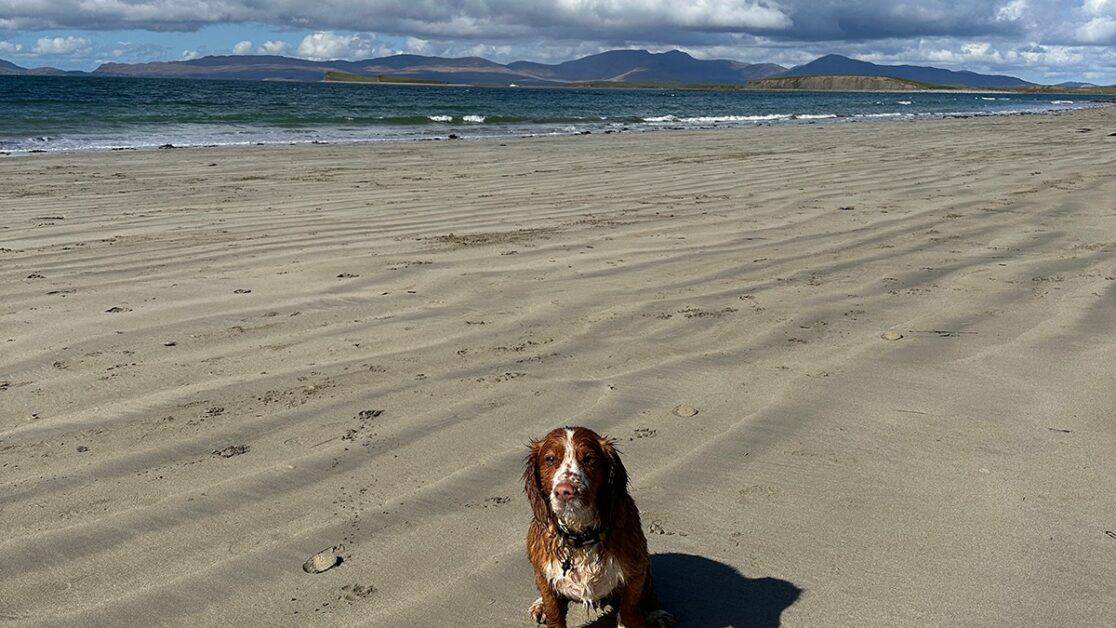
Pet Passport/ Animal Health Certificate
Lastly, you have to have an official travel document. This is either an EU pet passport or a UK animal health certificate.
1. If you have an in-date EU pet passport (not a UK one! ) and all jabs, vaccines and checks are up to date (meaning you’ve gone back to the issuing country in the last year with your pet), you can travel using this to Ireland.
2. If you don’t have an EU pet passport, you need to get an animal health certificate, issued by an approved vet. NOTE: Not every vet can issue one of these.
You can find out more about the animal health certificate and how to get one here .
I would recommend you get the tapeworm and the animal health certificate issued at the same time and make sure the vet signs, stamps and dates your document properly.
Travelling from Britain to Northern Ireland with a dog
There has been a lot of back-and-forth about the rules after BREXIT for visiting Northern Ireland with a dog. When I travelled, it was exactly the same as the rules for visiting the Republic of Ireland but for the most up-to-date information, please check the DAERA website .
However, I can confirm that (at time of writing) you don’t need another tapeworm to travel from the Republic of Ireland into Northern Ireland and vice versa. You also don’t need a tapeworm in order to come back to Britain.
Arriving in Ireland with a dog – what happens?
On the crossing to Ireland, no one checked Mac’s paperwork at all- which is bad! It would have been so easy to arrive in Ireland and realise I’d forgotten it. But there no checks at all at Fishguard.
When I arrived in Rosslare (Ireland), I drove around a corner in the port and found the pet admin area. There were two lovely women who checked Mac’s microchip and paperwork (including the tape worm time and date) and made sure that everything was in order.
And that was it. It was really straightforward.
Note: Bear in mind that if you amend your travel days after the tape worm has been given (as I had to), you’ll need to consider how that impacts the tape-worm travel window.

How dog friendly is Ireland?
Ok, so I’m finally in Ireland with my dog. What’s it really like? Is it true that Ireland is not dog-friendly?
Well, my friend, I’m pleased to share that Ireland is awesome if you have a dog.
I visited Ireland in March and April and I LOVED it. The weather wasn’t great, but we had some sunny days and there were so many beaches which Mac loved to run and play on- we often had huge stretches of them to ourselves. We spent time in the mountains and all around Ireland hiking and enjoying the beautiful scenery.
Now, it’s not all sunshine and roses. There were some weird things you should know about before you bring your dog to Ireland…
- Between beginning of June- mid September, many beaches are closed to dogs, particularly between 11-7pm
- Historic places often ban dogs (as they do here in Britain)
- Pubs, cafes and some restaurants were very dog friendly
- He was allowed at Powerscourt Waterfall (Wicklow Mountains) but not at most other private waterfalls, even when they’re in a park or something.
- THERE ARE NO PUBLIC BINS (see below)
The worst thing about travelling with a dog in Ireland
The worst thing about travelling with a dog in Ireland is that there are no bins in public places. Or very VERY few. The Irish motto is to ‘take it home’ which is wonderful and admirable but useless if you’re touring on a road trip and don’t have anywhere to dispose of your dog’s deposits like a responsible owner.
I found this the most challenging part about vanlife with a dog in Ireland, but I got around it.
- Get a Dicky Bag. This is GENIUS for giving you somewhere hygenic to store your filled baggies until you can find a public bin (and it stops all smells)
- If you have a garage or backbox, use that to store filled baggies until you find a bin
- Visit fuel stations (which almost always have a public bin). I ended up only filling my fuel tank half full so that I had an excuse to stop more often and get rid of rubbish and dog deposits.

5 of my favourite places to visit with a dog in Ireland
Here are some of my favourite places I visited with Mac in Ireland
- Wicklow Mountains
- Portnoo Beach
- Powerscourt Waterfall
- Achill sound (specifically Keel Beach)
- Ladies View and Killarney National Park (Ring of Kerry)
but there are so many more it’s impossible to list them all!
READ MORE: 7 epic Ireland road trip itinerary ideas
Heading back to Britain from Ireland with a dog
The process of bringing your dog back to Britain after visiting Ireland is fairly straightforward, as long as you don’t do a detour into France.
If you’re going directly from Ireland or Northern Ireland back into Britain, you don’t need a tape worm or even need to visit a vet. You just need to have their paperwork on hand when you cross the border.
Would I go to Ireland with my dog again?
In a word? Heck yes! It was fantastic. I definitely wouldn’t go between June- September and I’d be better organised in terms of rubbish and doggie deposits, but I can’t wait to go back and explore again someday soon!
Related Posts:
You might find these posts helpful for planning your Ireland road trip:
- 7 awesome Ireland itinerary ideas
- Motorhoming and campervanning in Ireland – everything you need to know
- Touring with a dog- 10 things they NEED

Kat never planned to buy a motorhome. She also never planned to quit her job as an air traffic controller, go touring around Europe in said motorhome, start one of the UK’s largest motorhome travel websites… or get a cocker spaniel.
Find out how she went from stuck in the rat race to being a digital nomad and inspiring thousands of people to have their own epic adventures here.
If you’d like to connect with Kat, send her an email or follow her adventures on social media.
Last update on 2024-04-28 / Affiliate links / Images from Amazon Product Advertising API
Sharing is caring!

Similar Posts
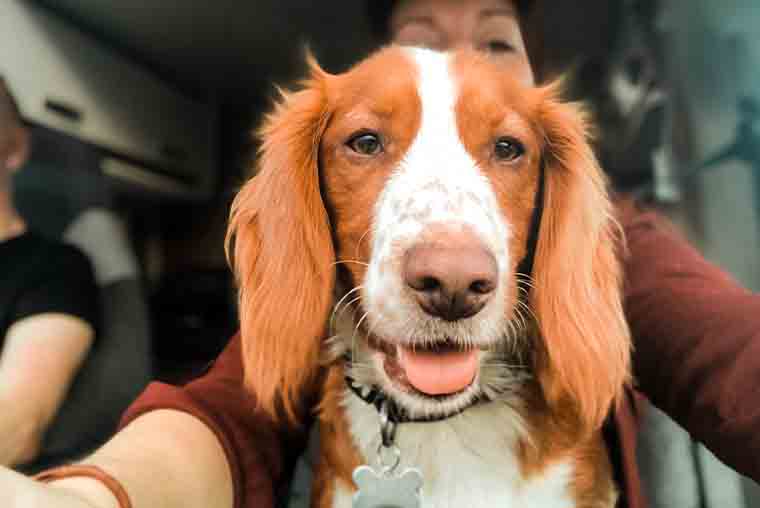
10 essential Dog Motorhome & Caravan travel accessories
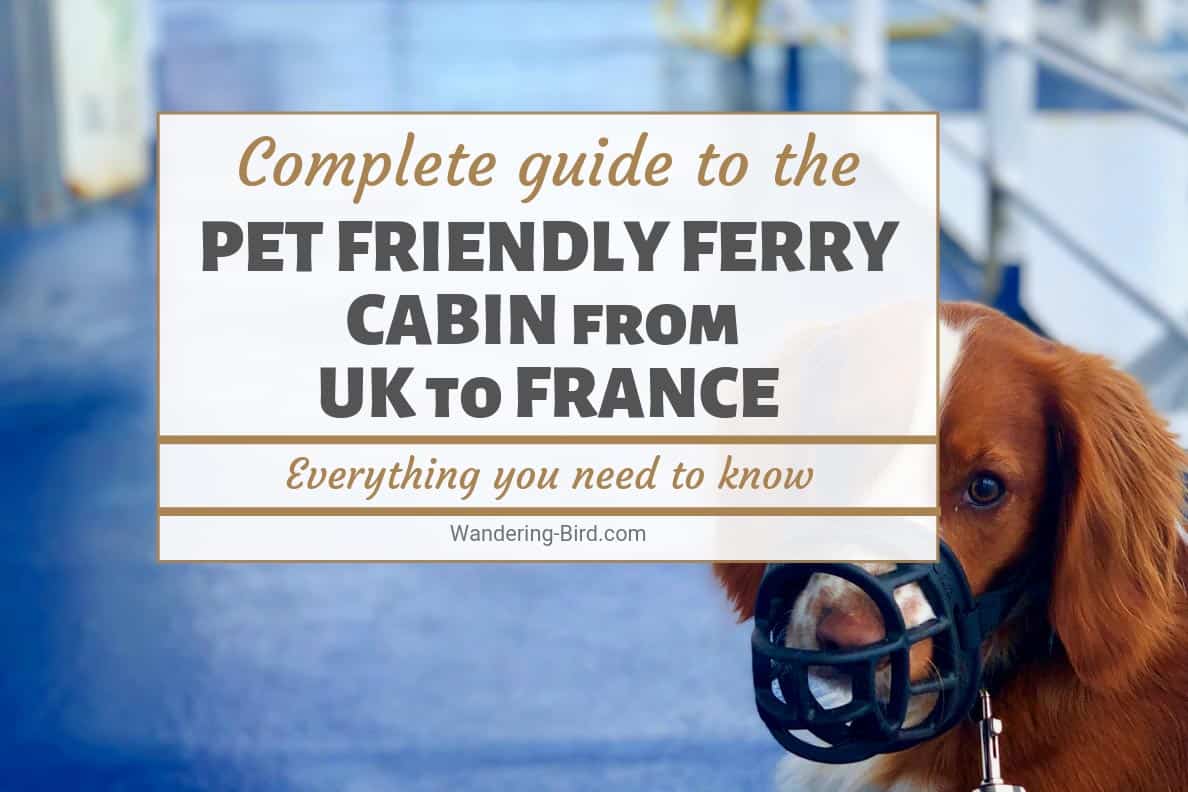
REVIEWED: Pet-friendly Cabin on Brittany Ferries. Worth it, or not?
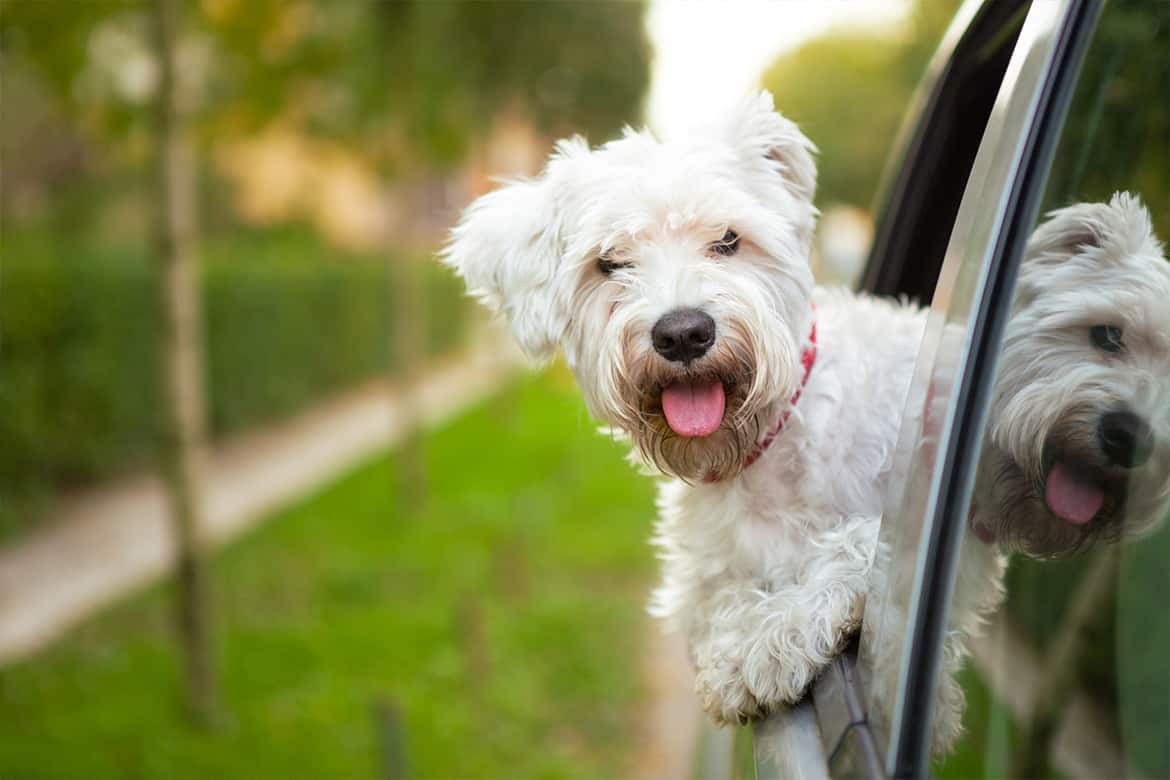
Travelling with a dog this Summer? READ THIS FIRST!

Ireland road trip – 7 epic Itinerary ideas to inspire you

How to get a pet passport

Motorhoming and Campervanning in Ireland- The Ultimate Guide
Leave a reply cancel reply.
Your email address will not be published. Required fields are marked *
Save my name, email, and website in this browser for the next time I comment.
Pet Travel to Ireland [Pet Passport Ireland 2023]

Whether you are planning on visiting Ireland for a holiday, or are relocating there, you don’t have to leave your pets behind!
Taking pets to Ireland is pretty straightforward. Firstly, you need to ensure you have to correct documentation for an Ireland Pet Passport, or EU Pet Passport . Dogs, cats and ferrets are eligible for an EU Pet Passport which allows them to travel freely within the EU. Other pet species such as birds, rabbits and rodents are also able to travel from to Ireland simply, with other documents we will discuss below. Secondly, you will need to organise travel. You can either enter Ireland in a car, ferry or by air.
In this article, we will discuss in detail the process of taking a pet to Ireland. Additionally, we will walk you through how to obtain an Ireland pet passport and all the documents required.
TABLE OF CONTENTS:
- What is a Ireland Pet Passport?
What pet species can get an Ireland Pet Passport?
- Visit the vet
- Organise travel
- Microchipping
- Rabies vaccination
- Tapeworm treatment
- Rabies titer test / rabies blood test
- Health certificate
- CITES permit
- How much does an Ireland Pet Passport Cost?
Commercial transport of pets to Ireland
- Can I take my puppy or kitten?
- What if I lose my Irish Pet Passport?
- Can I travel to Ireland without an Ireland Pet Passport or EU Pet Passport?
- Can I fly with my pet in the cabin of the plane?
Bottom Line
What is an Ireland Pet Passport?
An Ireland is a compilation of documents that your pet needs in order to travel to Ireland. With an EU Pet Passport , dogs, cats and ferrets are able to travel throughout the EU without enduring a quarantine period. Pets will require a microchip and rabies vaccination at minimum, proof of both is needed in order to obtain an EU Pet Passport . All documents must be issued by an official veterinarian within the EU. Essentially, a pet passport demonstrates that your pet is fit and healthy to travel.
The documents required to travel with pets depends on which country you are travelling from, and which country you are travelling to. Each country has different rules and requirements to export and import pets. Requirements and restrictions also vary between pet species. We will discuss the requirements to travel to Ireland in detail below.
What does an Ireland Pet Passport contain?
An Ireland Pet Passport / EU Pet Passport contains all the documents required to travel with your pet. It will basically prove that your pet is fit and healthy to travel.
An Ireland Pet Passport contains the following information:
- Details of ownership (name, address, passport number, telephone, etc.)
- Description of the animal (name, species, breed, date of birth, etc.)
- Official veterinarian’s details
- Microchip information
- Rabies vaccination certificate
- Rabies antibody titer test results
- Parasite treatment records
- Additional vaccination and treatment records
- Pet photo (optional)
At minimum, your Ireland pet passport will contain those listed 1-5. These are compulsory in order to travel within the EU. Those listed 6-9 are potential requirements that your pet may need if you are traveling from outside the EU or from certain countries.
All records are signed and stamped by your official EU veterinarian with official stickers from the medication used.
Currently, under the Pet Travel Scheme , only dogs cats and ferrets are able to obtain an Ireland Pet Passport or EU Pet Passports .
However, this doesn’t mean that you aren’t able to take other pets to Ireland with you. If you wish to travel with a bird, rabbit or rodent, you will simply need alternative documents in order to travel. We will discuss this in detail below.
RABBITS & RODENTS
Rabbits do not require rabies vaccinations or a health certificate if traveling from other EU states as well as Andorra, Switzerland, Croatia, Iceland, Liechtenstein, Monaco, Norway and San Marino .
However, pet rabbits and rodents important to Ireland from any other non-EU rabies controlled country will require a health certificate. Furthermore, they will need to stay in quarantine for 4 months.
Birds are permitted to enter Ireland from other EU Member States or Andorra, Croatia, the Faeroe Islands, Greenland, Iceland, Liechtenstein, Monaco, Norway, San Marino, Switzerland and the Vatican City State .
However you will either need to travel with your bird, or provide an Owner’s Declaration. Furthermore, you will need to send an import form to the Department of Agriculture.
Birds entering Ireland with their owner or owner’s representative from other countries will need to meet the following requirements:
- Application for a Licence to Import Pet Birds, health certificate and Owner’s Declaration must accompany your bird;
- Your bird must reside in an OIE member country ;
- You are not importing more than 5 birds;
- Your bird must have undergone isolation for 30 days prior to export; OR
- Two vaccinations against avian influenza with the H5 vaccine between 60 days and 6 months of import; OR
- 10 days of isolation and undergone a test to detect the H5N1antigen or genome; OR
- 30 days of quarantine in a registered premesis in the United Kingdom or other EU countries;
- All permits must accompany birds that are covered by CITES; and
- Export permits may be required by the wildlife authority in the exporting country.
Birds must be imported at either Dublin or Shannon Airport.
For more information on the Pet Travel Scheme, check out What is The Pet Travel Scheme (PETS)? .
What is the process of obtaining a Pet Passport for Ireland?

VISIT THE VET
You will need to visit the vet to obtain your pet’s passport.
Before booking your appointment, check that your chosen vet is authorised to issue EU Pet Passports . Not all of them are.
At your appointment, your vet will administer your dog, cat or ferret with a microchip and rabies vaccination, if your pet hasn’t already had them. They will also perform a basic health examination to ensure your pet is healthy enough to travel. Once the veterinarian is satisfied that your pet is ready for travel, they will review all the paperwork and complete the pet passport booklet.
If you are traveling with a bird, rodent or rabbit, you should obtain a health certificate. This is only a requirement to enter Ireland from non-EU countries, however many airlines will require a health certificate to transport pets. It’s also a good idea to have the health of your pet checked for yours and your pets own wellbeing.
You will need to bring the following with you to the vet appointment:
- Your passport
- Your local address
- Microchip information (if your pet already has one) – date of implantation, chip number and issuing company information (this info is also on the Annex IV)
- Pet’s rabies certificate or rabies titre test results no less than 21 days old (if your pet has one)
- Annex IV form completed by your home vet and endorsed by your country’s official veterinary regulatory body (if you are from outside the EU)
- Pet photo (optional but recommended) – the size should be 2 x 2 inches (5cm x 5cm). It is better to have one as you do not want to give any customs official a reason to deny your pet entry into a country.
If your pet hasn’t yet been microchipped or vaccinated against rabies, don’t worry, your vet will complete these at the appointment.

ORGANISE TRAVEL
You will then need to figure out how you are traveling to Ireland. The easiest option is to travel by car, however you can also travel by air. Traveling by air is far more complicated as airlines have very specific rules and regulations when it comes to traveling with pets. Some airlines may even prohibit certain pet species, and breeds from boarding their planes.
When importing pets to Ireland, you must:
1. Enter Ireland through Cork, Dublin or Shannon Airport, or Cork or Rosslare Port.
There are compliance checks that may need to be completed when pets enter Ireland. These can only be done at these specific ports of entry.
You can enter Ireland from any port if traveling to Ireland with a dog, cat or ferret from EU states, as well as Andorra, Switzerland, Croatia, Iceland, Liechtenstein, Monaco, Norway and San Marino, you can enter at any port.
If you are traveling from any other country, you must enter through Cork, Dublin or Shannon Airport, or Cork or Rosslare Port.
2. Inform the Department of Agriculture in Ireland, if required.
All dogs, cats and ferrets traveling from outside the EU, or those traveling with other pet species from anywhere, must provide advanced notice to:
- Dublin airport [email protected]
- Shannon airport [email protected]
- Cork airport [email protected]
- Ringaskiddy port, Cork [email protected]
- Rosslare ferry port [email protected]
3. Organise compliance checks for your pet in advance of your arrival to Ireland.
All dogs and cats will undergo a health check upon arrival in Ireland. They must be found free of any evidence of disease communicable to humans. If your dog or cat is not in apparent good health, further examination by a licensed veterinarian may be required at your expense.
You can email your port of entry (see contact email addresses above) and must include the following information:
- Date and time of arrival;
- Flight Number;
- Number of animals to be checked; and
- Paperwork the pet will be travelling with e.g. EU Pet Passport or EU (Annex III) Health Certificate.
If you do not follow these rules, or your pet fails the compliance checks, you risk being refused entry. Alternatively, your pet may be placed into quarantine for the necessary tests or vaccinations. In very limited circumstances, your pet may be euthanised.
Travelling to Ireland in a car or ferry
You can take your pets to Ireland on a ferry, with or without a car. However, some ferry companies do not allow foot passengers to bring pets on board. Therefore you may only be able to transport pets to Ireland in a car.
Some companies will charge extra to bring your pet on board, while others don’t.
Whichever option you choose, be sure to let the company know that you will be bringing your pet with you. It is best to do this well in advance to ensure for a smooth journey.
Many ferry companies require pets to stay inside vehicles, which is why foot passengers are not permitted to bring pets.
Travelling to Ireland by air
Traveling to Ireland with pets by air is far more complicated than traveling by car or ferry. This is because airlines have strict rules, regulations and restrictions when it comes to traveling with pets. Many airlines will not allow pets to travel on their planes at all, however there are some that will.
Traveling via air is far more expensive too, as you will need to pay extra to ship your pet. The price will vary between airlines, and depending on the weight and size of your pet.
1. Before booking your flight, be sure to check out different airline’s policies to ensure that you are able to take your pet with you.
Some airlines may allow your pet to travel in the cabin with you, where others will require pets to travel in the cargo area of the plane. If you have a small dog or cat, then you may be able to take them in the cabin with you. However, if you have a large dog then he will need to fly in the cargo.
- 13 Airlines That Allow Flying With Dogs In-Cabin [Prices & Policies]
- 13 Airlines That Allow Flying With a Cat In-Cabin [Prices & Policies]
- Which Airlines Allow Ferrets In Cabin? [Policies & Prices]
- 13 Airlines That Allow Pet Birds on Planes [Policies & Prices]
- 7 Airlines that Allow Rabbits in the Plane Cabin [Policies & Prices]
2. All pets must enter Ireland through Cork, Dublin or Shannon Airport.
All pets must enter through these airports, and must undergo a compliance check. They will check all of your documents and do a health check on your pet. You must organise this with your port of entry.
3. When booking your flight, inform the airline that you will be bringing your pet with you.
Do this as soon as you book your flight, as airlines often have limitations on how many pets they can ship at any given time.
4. Be sure to get an appropriate travel carrier and get your pet used to spending time in it.
Different airlines have different size and weight restrictions when it comes to pet travel carriers. Be sure to check those of your chosen airline. If traveling in the cabin of the plane, the carrier must be small enough to fit underneath the seat in front of you.
To ensure that the journey is as stress-free as possible for your pet, ensure they are comfortable in their travel carrier.
What are the requirements for an Ireland Pet Passport ?

In order to get an Ireland Pet Passport, your dog, cat or ferret requires the following:
REQUIREMENT 1: MICROCHIPPING
All dogs, cats and ferrets must have a microchip in order to obtain an Ireland Pet Passport. No other pet species require a microchip.
A microchip is a electronic chip that holds a unique number traceable with a chip reader. It is place just under your pet’s skin in between its shoulder blades.
We recommend that this is the first step in the process of obtaining an Ireland Pet Passport. This is because if your pet isn’t microchipped before they get their rabies vaccination, then the vaccination may not be valid. This would therefore mean your pet would have to get vaccinated again.
REQUIREMENT 2: RABIES VACCINATION
All dogs, cats and ferrets must be up to date on their rabies vaccinations. No other pet species require rabies vaccinations.
In order to get an Ireland Pet Passport, you must be able to prove that your pet has had their rabies vaccination within the past year, but at least 21 days before your arrival in Ireland.
Ireland accepts the 3 year rabies vaccination for dogs, cats and ferrets. However, it should only be applied as a booster (not the initial vaccination).
Once your pet has entered Ireland, a 21 day waiting period is not required for subsequent visits, as long as their rabies boosters are kept up to date, and the other entry requirements are met.
If your pet is entering Ireland from a high-risk rabies country , it must wait for a minimum of 30 days after the primary or booster vaccination before receiving a rabies titer test. Please see below.
Rabies-controlled (listed Third) countries as classified by the European Union:
High-rabies (non-listed Third) countries as classified by the European Union:

It may be possible that you require the following:
- Health certificate (ANNEX III Form)
REQUIREMENT 3: TAPEWORM TREATMENT
Dogs will need a tapeworm treatment if traveling from any country other than UK, Finland, Malta or Norway. This only applies for dogs.
All dogs must be wormed by a vet, with this recorded in their pet passport.
The treatment must contain praziquantel and must be administered by a veterinarian. This needs to be done between 5 days (120 hours) and 24 hours before returning to the UK, based on your arrival time in Ireland. If you fail to have your dog treated within this time scale, then he or she may be put into quarantine for up to 4 months.
REQUIREMENT 4: RABIES TITER TEST
All dogs, cats and ferrets traveling from a high-risk rabies country , must pass a rabies titer test (rabies blood test).
A rabies titer test is a blood test to see whether your pet’s rabies vaccination was successful. Your veterinarian will need to take a blood sample at least 30 days after the rabies vaccination. The sample will then be sent to an EU -approved blood testing laboratory . The blood rest results must show that the vaccination was successful – i.e. your pet’s blood must contain at least 0.5 IU/ml of the rabies antibody.
You must wait 3 months before your pet can enter Ireland. If you do not wait 3 months, then your pet will be quarantined in Ireland for the remainder of the time.
REQUIREMENT5: HEALTH CERTIFICATE (ANNEX III FORM)
Dogs, cats and ferrets will not require a health certificate. However, all other pet species will.
Only dogs cats and ferrets are able to obtain official EU Pet Passports / Ireland Pet Passports. Rabbits, birds, rodents, reptiles and amphibians will require official health certificates.
Any pets being transported for commercial reasons, such as adoption and re-sale, must be accompanied by a health certificate. See section on commercial transport of pets below.
REQUIREMENT 6: CITES PERMIT
Only if your pet is an endangered species, you will need to apply for a CITES Permit.
If your pet is not a dog, cat or ferret, and especially if it is a turtle or parrot, you should verify that it is not protected under CITES. You can check whether your pet is protected here .
How much does an Pet Passport for Ireland cost?
The cost of an Ireland Pet Passport is usually around £60-£100. The cost is broken down into the following costs:
- Microchipping – £0-20
- Rabies vaccination – £0-20+
- Pet passport application – £60
Firstly, different countries and veterinary clinics will have different pricing for a pet passport. Check the prices of a few different veterinary clinics if you want to save some money. Some will also offer pet passport packages.
Additionally, some pets species may require more treatments and vaccines than others. For example, dogs may require a tapeworm treatment where cats and ferrets do not.
If your pet already has a microchip, and a recent rabies vaccination, you will probably pay less for your Ireland pet passport. This is because you will only be paying for the health check and the documents.
For more information on the cost of an EU Pet Passport , check How much does an EU Pet Passport cost? .
For information on how to get free microchipping in the UK check How to get Dog Microchipping for Free in the UK .
Any dogs, cats and ferrets being transported for commercial reasons, such as adoption and re-sale, require the following:
- Valid rabies vaccination;
- Undergo a health examination and be accompanied by an Annex I Health Form;
- Be accompanied by original paperwork, signed by a licensed vet; and
- A successful rabies titer test result.
Pets are only permitted to enter Ireland from a high-rabies country if they are accompanied by their owner or a legal representative of the owner.
DOCUMENT ENDORSEMENT
A licensed veterinarian must complete the English version of the commercial EU health certificate for Ireland within 48 hours of entry. If your pet is traveling from the US or Canada, the veterinarian must be accredited by the USDA or CFIA respectively and the commercial EU health certificate must be endorsed by the local USDA or CFIA office unless the certificate is completed by a military Veterinary Corps Officer or GS-0701 series civilian government veterinarian employed by the military. If traveling to Ireland from another country, then the forms must be endorsed by the government agency responsible for the import and export of animals.
ADDITIONAL VACCINATIONS
All dogs must be vaccinated against distemper. If traveling from a country other than the UK, Finland, Malta or Norway must also be treated against tapeworms.
If your pet is entering Ireland from a rabies-controlled country , it must enter through an approved Border Inspection Post (London Heathrow or Gatwick Airports). You must give them at least 24 hours prior to arrival.
Which breeds are banned from entering Ireland?
The following breeds of dogs or their crosses are not banned but are controlled while in Ireland:
- American Pit Bull Terrier;
- English Bull Terrier;
- Staffordshire Bull Terrier;
- Bull Mastiff;
- Doberman Pinscher;
- German Shepherd (Alsatian);
- Rhodesian Ridgeback;
- Rottweiler;
- Japanese Akita; and
- Japanese Tosa.
Owners of these dog breeds are responsible for their pet’s actions, and are liable for injuries or attacks. In public places, they must be on a strong, short lead. The person holding your dog must be over 16 years old, and your dog must be muzzled. The court, if they deem the dog as dangerous, sadly has the power to have your dog euthanised.
Frequently Asked Questions [FAQs]
Can I take my puppy or kitten to Ireland?
Yes, as long as your puppy or kitten is at least 4 months old. This is because Ireland requires dogs and cats to be vaccinated against rabies, which can only be administered to pets over the age of 3 months. You must then wait 21 days after the vaccination, before entering Ireland. Additionally, proof of age should be available.
Can I travel without an Ireland Pet Passport or EU Pet Passport
Yes, you may enter Ireland without an Ireland Pet Passport or EU Pet Passport as long as you have an EU Health Certificate (also known as EU Annex III Health Certificate.
What if I lose my Ireland Pet Passport?
If a passport is lost or stolen, it can be replaced as long as you have evidence of the animal’s vaccination record and blood test result (if applicable). Both records must also show your pet's microchip number. Details of the lost or stolen passport, including its serial number, country and date of issue (if known) should be recorded on the Pet Passport Control Sheet. We recommend that you scan photos of your pet passport in case you lose it.
Can I take my pet in the plane cabin with me?
It is a possibility yes. If you are the owner of a small dog or cat, then you may be able to take them in the cabin with you. However, only some airlines will allow this.
Taking pets to Ireland is pretty straightforward. If you are taking a dog, cat or ferret, you will need to get them an Ireland Pet Passport or an EU Pet Passport . This involves getting your pet microchipped and vaccinated against rabies at the vet. If you are taking another pet species with you, then they will not need a microchip or rabies vaccination, but you will need a health certificate at minimum. You may also require an import permit.
Traveling to Ireland with pets in a car or ferry is far simpler than flying. This is because airlines have strict rules and regulations to follow when traveling with pets. If you are planning on flying with pets to Ireland, ensure you select an airline that will permit the transport of your pet, and plan your trip well in advance.
Hope you have found this helpful. Happy travels!
- How Much Does an EU Pet Passport Cost?
- How to get an EU Pet Passport [GUIDE]
- How Much Does a Dog Passport Cost in the UK?
- How to take a Dog on The Eurotunnel [Guide, FAQ & Prices]
- How to take a Cat on The Eurotunnel [Guide, FAQ & Prices]
- How to take a Ferret on The Eurotunnel [Guide, FAQ & Prices]
- What is The Pet Travel Scheme (PETS)? [GUIDE]
Related Articles
![travel to southern ireland with a dog Photo of How to Safely Secure Dogs When Camping? [5 Methods]](https://www.petsthattravel.com/wp-content/uploads/2023/11/how-to-secure-dogs-when-camping-390x220.jpg)
How to Safely Secure Dogs When Camping? [5 Methods]
![travel to southern ireland with a dog Photo of Do All Dogs Have Webbed Feet? [Breed Info & Paw Care]](https://www.petsthattravel.com/wp-content/uploads/2023/11/do-all-dogs-have-webbed-feet-390x220.jpg)
Do All Dogs Have Webbed Feet? [Breed Info & Paw Care]
![travel to southern ireland with a dog Photo of Can Pit Bulls Swim? [Breed Facts & FAQs]](https://www.petsthattravel.com/wp-content/uploads/2023/11/can-pitbulls-swim-390x220.jpg)
Can Pit Bulls Swim? [Breed Facts & FAQs]
![travel to southern ireland with a dog Photo of Do Newfoundland Dogs Like Water? [Breed Facts & FAQs]](https://www.petsthattravel.com/wp-content/uploads/2023/11/newfoundland-dog-water-390x220.jpg)
Do Newfoundland Dogs Like Water? [Breed Facts & FAQs]
Leave a reply cancel reply.
Your email address will not be published. Required fields are marked *
Save my name, email, and website in this browser for the next time I comment.

Moving to Ireland With a Dog: 23 Absolutely Essential Tips

Moving to Ireland with a dog can seem like a daunting and overwhelming process. The process is much more simple if you can get clear on the steps you will have to follow for your pet and your particular situation.
As a dog mom myself, I know it can be stressful to make sure you are doing the right things so your pet stays comfortable and well-taken care of during a big transition. Here are the 23 essential tips and the steps you will have to take to move to Ireland with your dog.
Jump To… • Can I Bring My Dog if I Move to Ireland? • How Long Does a Dog Have to Be In Quarantine for in Ireland? • How Much Does It Cost When Moving a Dog to Ireland? • Important Information When Moving to Ireland With a Dog • Moving to Ireland With a Dog From the European Union • Moving to Ireland With a Dog From Other Countries (Non-EU) • Moving to Ireland with Assistance/Service Dogs • Official Irish Government Website and Contact Information • Ireland’s Dangerous Dogs List • Ireland’s Dog Vaccinations and Identification Requirements

Can I Bring My Dog if I Move to Ireland?
Yes, in most situations moving to Ireland with a dog is possible. You will have to follow certain requirements depending on what country you are coming from, which I will outline in this article.
The 5 Things I WISH I Knew Before Moving to Ireland
Unsubscribe at any time.
How Long Does a Dog Have to Be In Quarantine for in Ireland?
If your dog is free of tapeworms, has been properly vaccinated and microchipped, and is accompanied by a valid EU pet passport or EU Health certificate , you should not have a problem with having to quarantine your dog.
However, when moving to Ireland with a dog that has not followed the appropriate rules, the dog might be subject to quarantine under official control while the necessary tests or vaccinations are being performed.
How Much Does It Cost When Moving a Dog to Ireland?
Unfortunately, it can be very costly to move to Ireland with a dog. You will need to factor in all elements such as veterinarian visits, vaccinations, microchipping, and tests as well as the actual travel costs and any documentation.
The cost of moving to Ireland with a dog will likely start around $2,000 USD and potentially go up from there, depending on your situation and the cost of living where you are coming from.
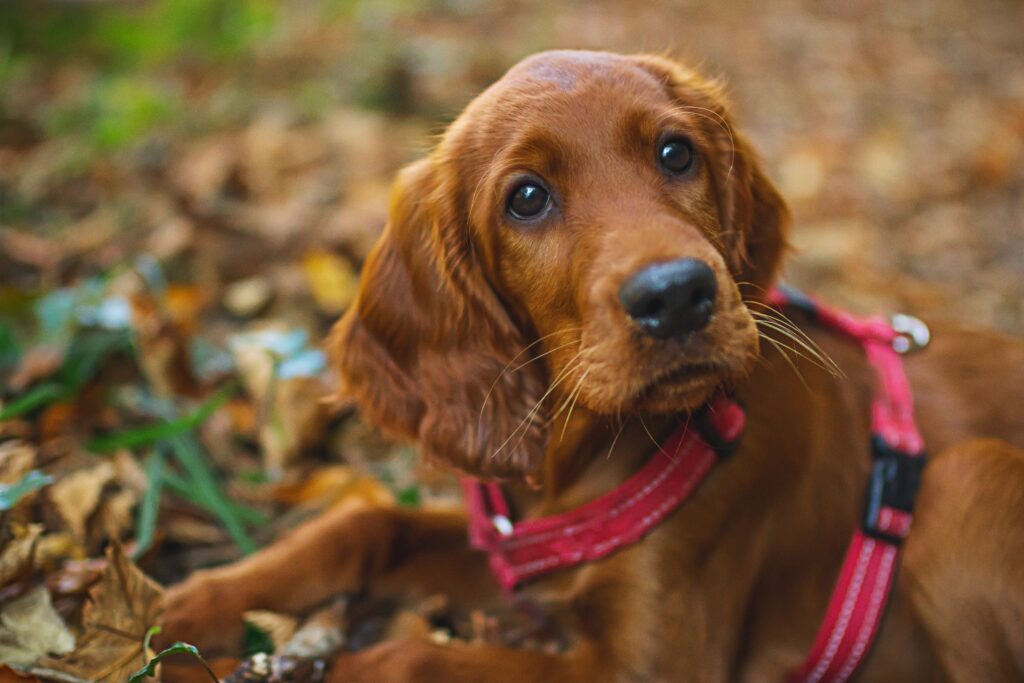
Important Information When Moving to Ireland With a Dog
1. your pet must arrive in ireland with you..
Or if it is accompanied by a person authorized by you, your dog will need to arrive in Ireland within five days before or after you travel.
2. Your pet must be accompanied by original paperwork, copies are not allowed.
3. the maximum number of animals allowed to travel to ireland with you is five..
These pet travel rules apply no matter which country you are traveling from. The only exception is if you are bringing more than 5 dogs to Ireland for a dog show or competition. In this case, you will need to provide written confirmation to [email protected] .

4. If you are buying a dog or other pet abroad and shipping it to Ireland, your pet can not enter Ireland on the typical rules.
Under Ireland’s pet travel rules, if you are going to ship a pet to Ireland and you are not going to collect it and travel home with it you will have to follow a different set of travel rules.
Check here for more information.
5. The same applies if you intend to buy, sell or gift a dog in Ireland.
If there will be any change of ownership involved after your arrival in Ireland, including delivery of a purchased or rehomed animal, you will need to follow the special rules as outlined in the above link.
6. Each individual airline decides whether to carry a dog in the cabin or as excess baggage.
The Irish Department of Agriculture, Food, and Marine does not have a say in this decision.
Many airlines do not fly “dangerous dogs” and most airlines have a carrier dimension and weight maximum for dogs allowed in the cabin.
❗ 7. Your dog might be refused entry into Ireland or placed into quarantine if you do not follow the appropriate rules and meet the required compliance checks.
Moving to ireland with a dog from the european union.
These next set of rules applies to any person moving to Ireland with their pet dog (cat or ferret) from an EU Member State including Andorra, Gibraltar, Greenland, the Faroe Islands, Iceland, Liechtenstein, Monaco, Northern Ireland, Norway, San Marino, Switzerland, and the Vatican City.

Your dog will NOT be required to quarantine when entering Ireland during the move IF…
A. your dog has been microchipped..
The microchip must be inserted FIRST before the dog receives their rabies vaccination. The microchip must be readable by a device compatible with ISO standard 11785.
However, you may bring your own microchip scanner, OR if your pet has a different type of microchip, your vet will be able to remove it and replace it with a chip that is compatible with the EU microchip readers.
b. Your dog has a valid rabies vaccination.
The vaccination must be given after the microchip is inserted and your pet must be at least 12 weeks old before the vaccination is given. Vaccinations must be given by your veterinarian.
Before moving your dog to Ireland, you must wait until the rabies immunity has developed.
The vaccination datasheet will state how long you must wait for immunity to develop, most often it will be between 21 to 30 day s . The vet that administers your dog’s vaccine will be able to let you know how long to wait.
A rabies vaccination with either a 1 or 3-year validity period is acceptable for moving a dog to Ireland.
c. Your dog has a valid EU pet passport.
1. ireland accepts pet passports from all eu countries..
A valid pet passport is one that is issued by an EU country or territory which certifies that the rabies vaccine given to the dog is valid.
2. Your dog will need a valid EU Health Certificate if it does not have an EU pet passport.
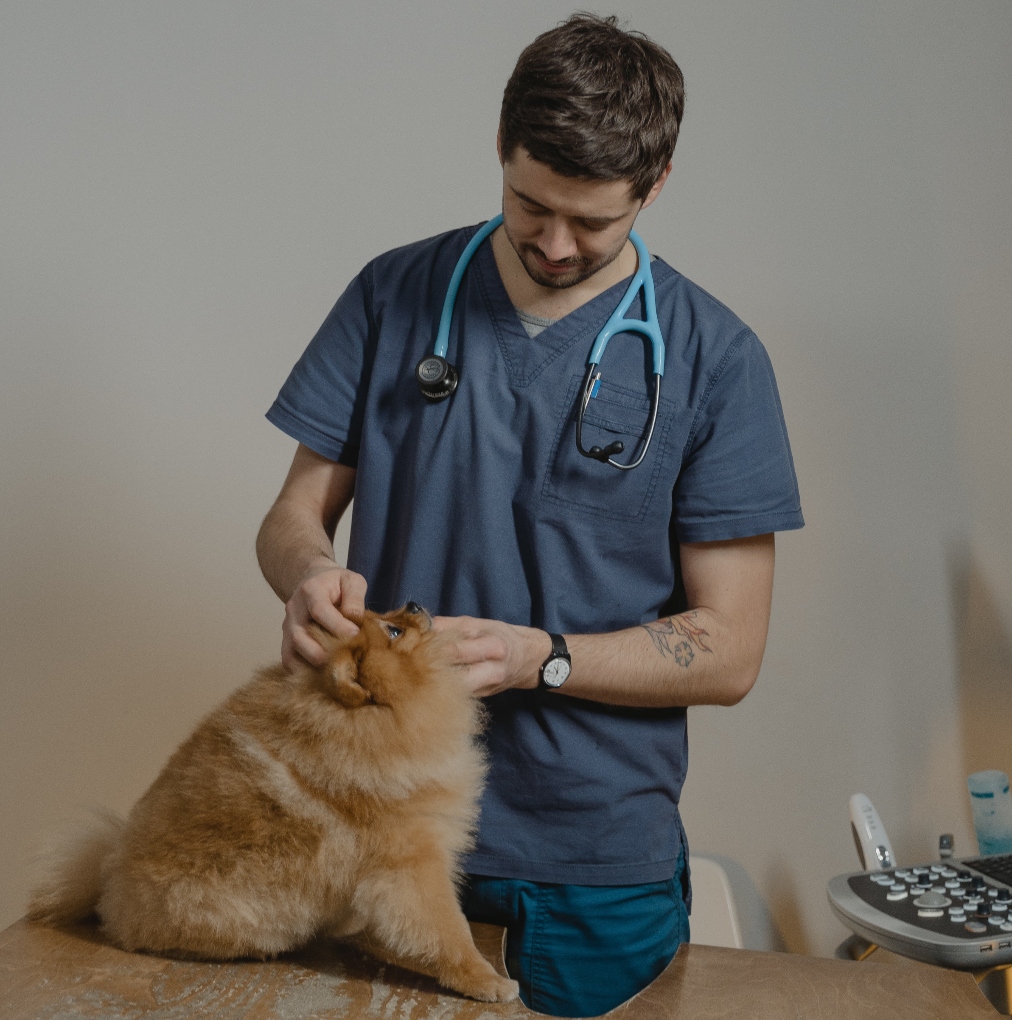
3. Vets in countries outside of the EU are not allowed to complete, sign, or stamp the section for rabies vaccination in the passport.
If they do, the pet passport will become invalid for travel into the EU. For those from other countries, you will need to acquire the EU Health Certificate instead.
4. An EU health certificate must be:
a. Completed by your Veterinarian, AND
b. Signed and endorsed by an Official Veterinarian of the country of departure, within 10 days of the dog’s arrival into the EU, AND
c. Upon arriving into the EU, it will need to be immediately signed and endorsed by the EU country which performs the compliance checks (Ireland in this case).
NOTE: An Offical Veterinarian in this case is a State Veterinarian directly employed by the government from which you are departing (your home country).
5. If you are traveling to Ireland by sea, the validity is extended by the number of sea travel days.
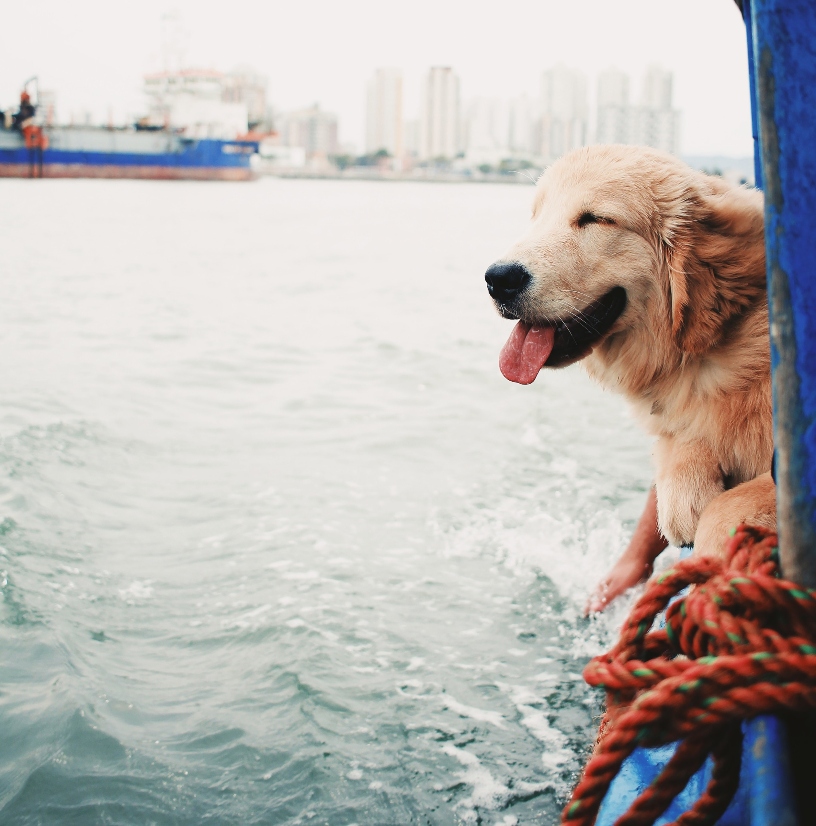
6. Your dog’s EU Health Certificate is valid for travel around the EU for up to 4 months, or until the anti-rabies vaccination expires, whichever comes first.
7. if you are moving a dog to ireland from any country besides finland, malta, northern ireland or norway, a veterinarian must treat your dog for tapeworm..
The treatment will need to be recorded in the dog’s pet passport or EU health certificate each time you travel to Ireland.
The treatment MUST:
- Contain praziquantel.
- Be administered by a veterinarian.
- Be administered no less than 24 hours (1 day) and no more than 120 hours (5 days) before the dog’s scheduled arrival time in Ireland.
8. Dogs entering from EU countries may enter Ireland through any port or airport.
Moving to ireland with a dog from other countries.
For dogs moving to Ireland from MOST other countries outside of the EU, they will need to follow these rules.

Your pet dog will be allowed entry to Ireland and will NOT be required to quarantine IF…
A. your dog has been microchipped.
The vaccination must be given after the microchip is inserted and your pet must be at least 12 weeks old before the vaccination is given. Vaccinations must be given by your vet.
As is the same with dogs moving to Ireland from the EU, your dog must wait until the rabies immunity has fully developed and a rabies vaccination with a 1 or 3-year validity is acceptable for the move to Ireland.
c. Your dog carries a valid EU pet passport or EU Health Certificate (see above information).
D. your dog has been administered tapeworm treatment..
The tapeworm treatment will need to be recorded in the dog’s pet passport or EU health certificate before each time you travel to Ireland.

2. To enter Ireland from outside of the EU, you must give advance notice that you will be bringing your pet dog into Ireland.
3. you will need to arrange in advance to have a pet compliance check carried out on upon your arrival to ireland..
You will not be allowed to leave the airport or port of entry (besides an emergency) before your compliance checks are carried out.
This does not apply if you are arriving from an EU country. However, if you have traveled through another EU country on your way to Ireland and have NOT received a compliance check, you will still need to complete one upon your pet’s arrival to Ireland.
4. Dogs moving to Ireland from outside of the EU will have to pay a fee for compliance checks.
There is no charge for compliance checks on pets entering from Great Britain or for guide dogs.
5. Compliance checks will typically be performed upon arrival to Ireland at the port or airport.
6. pets from non-eu countries may only enter ireland through:.
• Dublin Airport – advance notice can be emailed to: [email protected]
• Cork Airport – [email protected]
• Shannon Airport – [email protected]
• Dublin Port – [email protected]
• (Cork) Ringaskiddy Port – [email protected]
• Rosslare Ferry Europort – [email protected]
Moving to Ireland with Service or Assistance Dogs
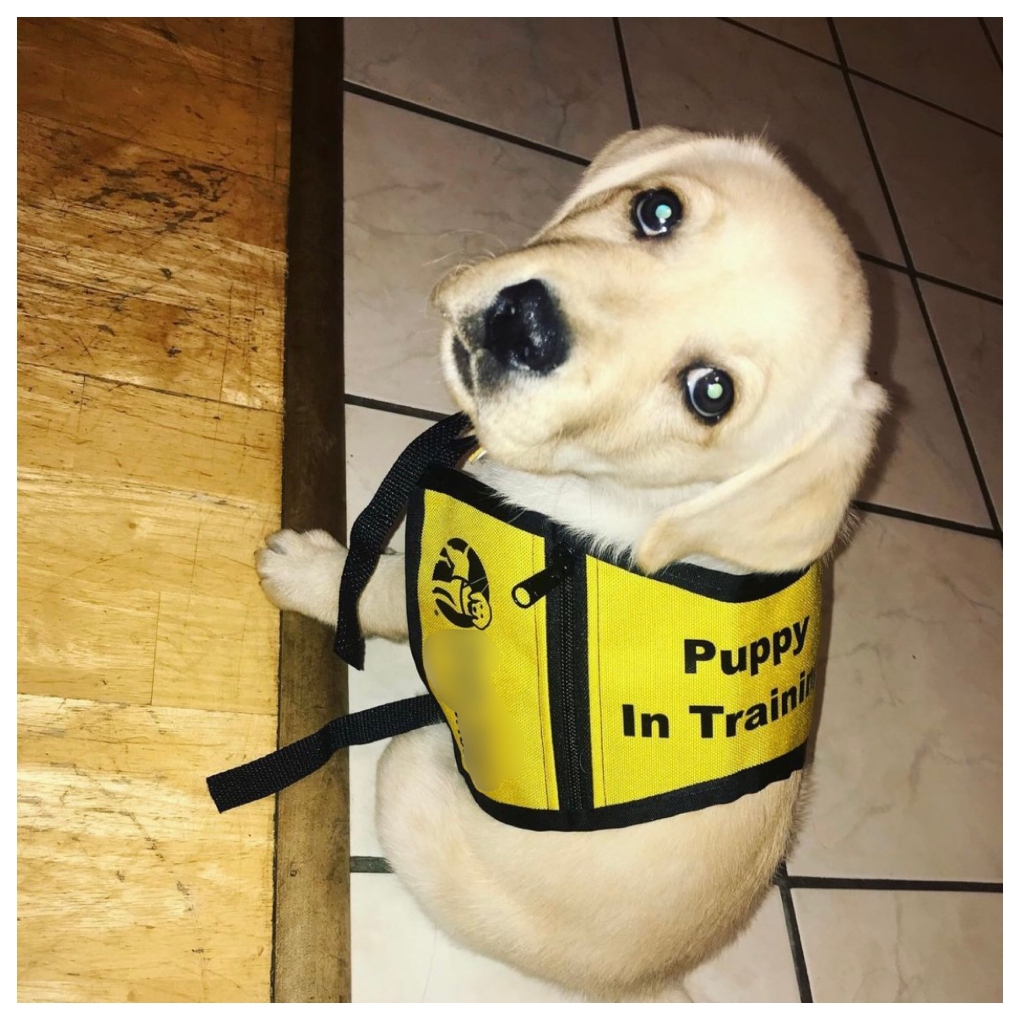
1. Airlines operating within the EU must allow recognised assistance dogs in the cabin of the plane.
This includes disabled passengers and passengers with reduced mobility. All dogs traveling in a cabin of an aircraft must still be compliant with the rules for entering Ireland (outlined above).
2. It is up to the airline to decide if they will allow dogs providing other types of services (such as emotional support animals) to accompany passengers in the cabin of the airplane.
You may have to work with your airline to provide proper verification of your service animal.
3. When moving to or travelling from a non-EU country, you will be required to provide 24 hour (prior to departure time) advance notice of your intention to bring your service dog into Ireland.
For further information on moving to Ireland with your dog, you can check the official website for Ireland’s pet travel. Or, submit any questions here: Email: [email protected] • Telephone from within Ireland: 01 607 2827 • Telephone from outside of Ireland: 00353 1 6072827
Are There Any Other Restrictions for Moving to Ireland With My Dog?
Ireland’s dangerous dogs list.
No dog breeds are banned in Ireland. However, there are a few breeds that are restricted and will have to follow extra rules in Ireland.
The dog breeds on the restricted list are:
- American Pit Bull Terrier
- English Bull Terrier
- Staffordshire Bull Terrier
- Bull Mastiff
- Dobermann Pinscher
- German Shepherd (Alsatian)
- Rhodesian Ridgeback
- Japanese Akita
- Japanese Tosa
- Ban dog – any cross of the above breeds or any strain of the above listed dogs.
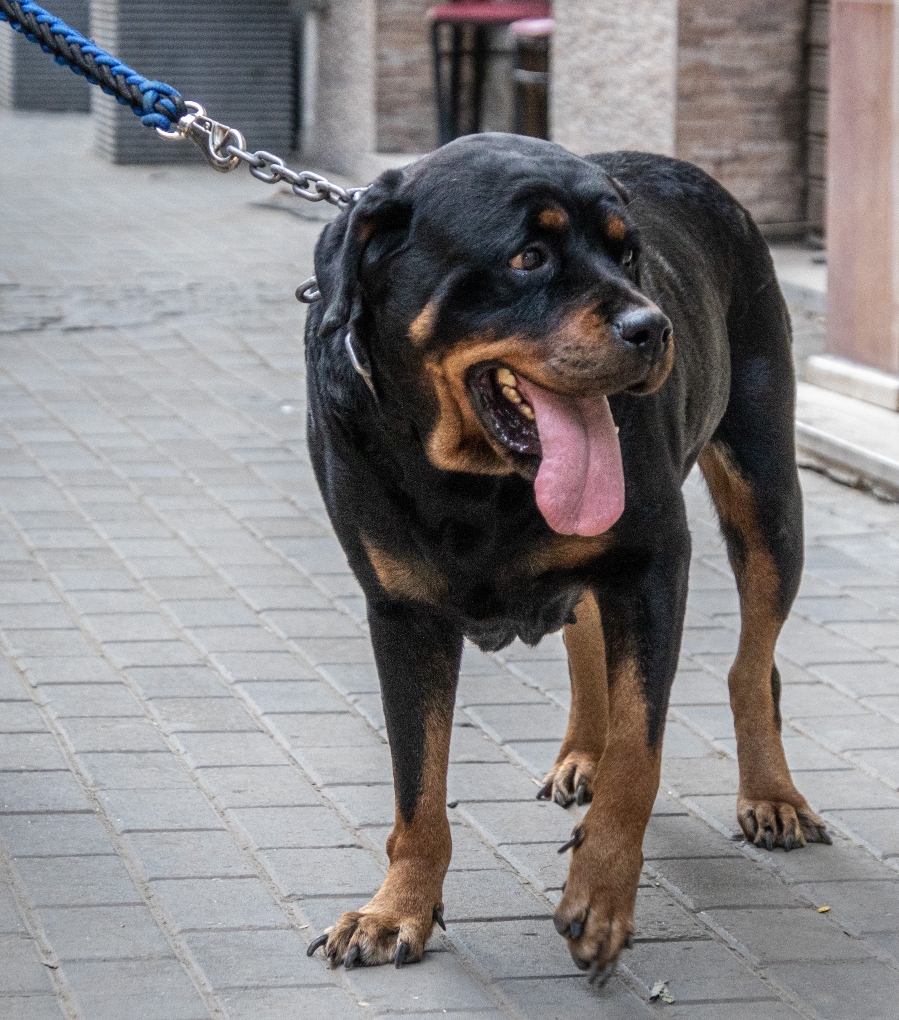
The restrictions these breeds have to follow are:
- Only people over the age of 16 are allowed to handle these dogs.
- These dogs are required to be muzzled in public.
- These dogs are required to be on a short (less than 2 metres/6.6 foot) lead. The leash must either be ‘sufficiently strong’ or a chain.
- At all times the dog must wear a collar with the owner’s information on it. This information should include owner’s name & address.
Ireland’s Dog Vaccinations and Identification Requirements
Dog licensing:.
All dogs over 4 months of age are required to have a license in Ireland. If you are moving to Ireland with a dog and it is going to be staying for more than 30 days then it will need to be licensed.
You can purchase an annual (€20) or lifetime (€140) license for your dog at your local Post Office or buy one online at licences.ie and will be issued by post within 10 working days.
Dog Identification:
Your dog must wear a collar with its accurate name and address. Make sure to update the information upon moving to Ireland. You will also need to have your dog microchipped (as outlined above).
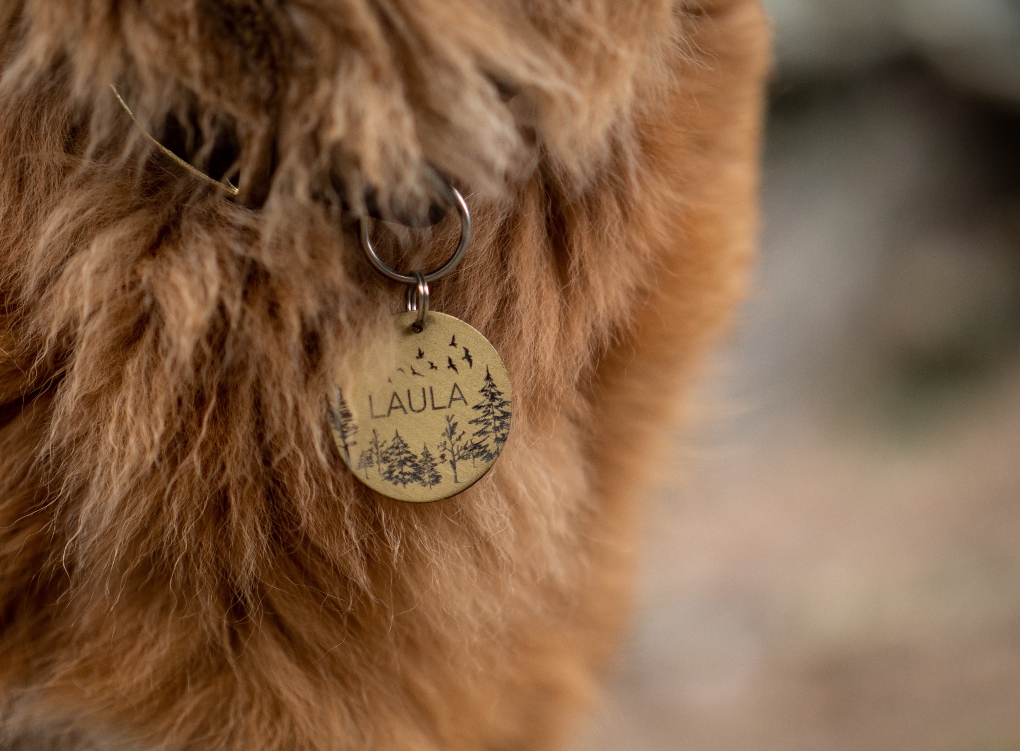
Dog Vaccination:
Dogs in Ireland need to be vaccinated against distemper, hepatitis, parvovirus, leptospirosis, and kennel cough.
Puppies should get vaccinated between 6 to 9 weeks of age and then again at 10 to 12 weeks. Dogs are not considered fully protected until after their second vaccination. Up until this point, they should remain at home to keep them safe from catching a disease.
You will likely need regular ‘booster’ vaccinations to keep your dog immunized and safe against disease. Ask your veterinarian how often your dog will need to be vaccinated.

Making any big move can come with its challenges, especially when it comes to moving abroad and moving your dog to Ireland. Follow the steps outlined above and check the Irish government’s website to stay up to date with the latest requirements and regulations for making the move with your furry friend!
Looking for resources to use for your next trip or move abroad? CLICK HERE for my favorite travel and expat tools!
Related Posts: Are There Snakes in Ireland? Cost of Living in Ireland Jobs in Ireland for Americans
☘️ FAQs About Ireland ☘️ ✈️ Where Can You Find the BEST Flight Deals to Ireland? 1. Scott’s Cheap Flights – FREE flight deals alert, works best if you can be flexible 2. Skyscanner – FREE search engine, great for budget flights + deal ❗ Is Travel Insurance Required in Ireland? No, it’s not. However, it’s always recommended to have travel insurance any time you travel in case of injury, accident, lost luggage, missed flight, etc. The best and most affordable travel/expat insurance is Safety Wing . >>> CLICK HERE FOR INFO ☔️ When Is the Best Time to Visit Ireland? Summer (June-August) – is the warmest and rains the least but you will have the most crowds. Spring (March-May) or Fall (September-November) – are cooler and have more rain but you will beat the crowds and see some incredible wildflowers ( spring )/greenery (fall). 🏠 Where Should You Stay in Ireland? Hotels, hostels, vacation rentals, and house sitting are all available in Ireland for accommodation. My top recommendations for each are: • Booking.com • Hostelworld • Vrbo (usually better options than Airbnb in Ireland) • Trusted Housesitters (watch a home/pets in return for a FREE place to stay) ☘️ Where Can You Find Tours? I found incredible tours in Ireland >>>HERE for private and guided group tours of both the most popular attractions and ones that fit your specific interests. 🚘 Should You Rent a Car in Ireland? I always tell my friends and family to rent a car in Ireland so that they don’t miss out on the gorgeous scenery and wonderful things to do in between the big cities! However, if you plan to stay only in the cities, then you should be fine getting by with buses and walking. >>> What to know about driving in Ireland >>> The best car rental in Ireland 🍻 Make sure to try out the pubs ! Even if you don’t drink, the atmosphere, live music, and friendly people are very uniquely Irish.
Janelle Axton is a travel consultant and owner of Make the Trip Matter, a service dedicated to helping people create a lifestyle around frequent travel and extended time abroad. She grew up in California and spent time living abroad in Ireland in addition to traveling to over 25 countries.
Similar Posts

17 Epic Things to Do in Galway in December (2024)

Everything to Know About Living as Expats in Ireland

Top 15 Incredible Cliffs of Moher Tours From Dublin in 2024

Top 15 Best Places to Stay in Dublin for Couples

Ireland Mountains: Best Hikes, Climbs, and Basic Facts

Does Ireland Celebrate Thanksgiving? Visiting During the Holidays (2024)
TAKING YOUR PET ABROAD

Checking in and boarding
Wondering what the journey with your pet will be like? Our step-by-step guide to travelling with Brittany Ferries with your pet explains all.
Essential checklist
VISIT YOUR VET - If you do not have an EU-issued pet passport, you must get an Animal Health Certificate (AHC) from your vet every time you travel
MICROCHIPPING - Your pet must be microchipped, and the microchip number and date must be entered correctly on the pet passport/AHC. The microchipping date must be prior to the rabies vaccination
VACCINATION - Your pet must be vaccinated against rabies, and the vaccination information must be entered correctly on the pet passport/AHC
TAPEWORM - To re-enter Ireland, your dog must have tapeworm treatment administered whilst abroad. The treatment must be done more than 24 but less than 120 hours before scheduled arrival time in Ireland and must be entered correctly on the pet passport/AHC. See our list of vets near our ports for vets we recommend
MUZZLE - Your dog must wear a muzzle in all areas of the ship when outside of your vehicle or the kennel/pet-friendly cabin. Make sure you have familiarised your dog with the muzzle
YOUR VEHICLE - Make sure your pet has water, absorbent bedding and adequate ventilation in your car for the duration of your sailing
Pre-check that your pet is ready for travel!
When you've booked with us, check that your pet's documentation is compliant by using our simple, free and secure pet travel pre-check . Available from 96 hours before your departure, simply log in with your Brittany Ferries account details and you can get instant confirmation whether your pet's travel documentation is valid to travel.
BEFORE YOU ARRIVE
Make sure your pet is happy to travel in your car - potentially for long periods and in hot conditions, especially if you are travelling in the summer.
If your pet has to stay in the car during the sailing, make sure you leave them plenty of space along with food, water and some toys!
Don't give your pet too much to eat or drink before the ferry sails and allow adequate time to enable them to exercise, go to the toilet and settle down before boarding.
CHECKING IN
Passengers must check-in at least 90 minutes before departure. Ensure that your pet is exercised and toileted before you board.
When you check in we will place a ‘pet sticker’ on your car windscreen, this must stay in place until you have left the port of arrival.
Your pet and its documentation will be checked when arriving or departing from any of our ports in Ireland, France and Spain.
You will need to scan your pet’s microchip when checking in and present the pet’s documentation when departing and arriving in Ireland, France and Spain.
DURING YOUR SAILING
There are three options for travelling with your pet on our ferries, dependent on which ship and route you are travelling on. They can either travel in a pet-friendly cabin (where your pet can stay with you during the sailing), in onboard kennels or in your vehicle. On ships where there are no kennels or pet-friendly cabins your pet must remain in your vehicle.
You will be given instructions on the procedure for the transfer of your pet from the car to the kennel or pet-friendly cabin by the crew when boarding. If your pet is staying in your vehicle, you will need to make sure they are settled for the journey.
Be sure to take everything you need with you when you leave the garage as the car decks are locked once the ship has sailed. In some circumstances, you may be able to arrange to visit your pet mid-voyage. Please ask at the Information Desk on board to arrange a time to visit as you will need to be escorted by a member of crew.
With the exception of assistance dogs, pets are only permitted in the areas designated for pets on board the ship. These will be signposted on board.
Pets must be muzzled and on a lead at all times outside of the kennel/pet-friendly cabin. This means during the journeys between your vehicle and the kennel/cabin, the kennel/cabin and the exercise area and whilst in the exercise area.
Muzzle training your dog

Making your pet comfortable
If not staying with you in a pet-friendly cabin, your pet will spend most of their time at sea by themselves. So it is vital that you do everything you can to make them comfortable and happy.
Whether they are travelling in a kennel or in your vehicle, be sure to provide food and water as well as familiar toys or blankets for your pet during the journey.
When staying in your vehicle, make sure there is enough ventilation for your pet. Creating a flow of fresh air can be helped by opening both the driver and passenger front windows. Take care to ensure that your dog cannot escape from their carrier or your vehicle. It is worth bringing window grilles with you to help with ventilation and preventing escape.
Your pet will need plenty of space during the journey and when left in the vehicle. Whether unconfined or in a crate they will need to be able to sit and stand up at full height, turn around easily and lie down in a natural position, and must not be able to escape.
Visiting your pet
On Pont-Aven, you have direct access to your pet’s kennel whenever you wish (except during cleaning times, 30 mins twice a day) so you can visit them throughout the sailing. Cats are not allowed to stay in kennels and must stay in your vehicle. If your pet is staying in your vehicle on Pont Aven or Armorique, any visit to check on them must also be arranged with the crew as the car decks are locked once the ship sets sail.
You can request to visit your pet by reporting to the Information Desk after boarding. Visits are at the discretion of the crew and will be weather permitting. You will be escorted by a member of crew. Your pet will not be allowed to leave the vehicle during this visit.
You are responsible for cleaning up after your pet on board and suitable dustbins are provided in the designated pet areas.
ARRIVING IN FRANCE OR SPAIN
Once you have left the ferry, find somewhere safe to pull over and get your dog out of the car. This will allow you to check them over and gives an opportunity for them to go to the toilet and stretch their legs.
The vets can often get quite full, so book your vet appointment as soon as you can for your return journey. Check the opening times of the vet local to your stay as soon as you arrive.
RETURNING TO IRELAND
Many vets are closed on Sunday and Monday - remember this when complying with the "between 24 and 120 hours" rule for tapeworm treatment for dogs. Also remember to check if it is a bank holiday in the country you are visiting when you want to return as this will affect the opening times of vets.
IMPORTANT INFORMATION
Consider the length of the journey and how this may affect your pet. Your pet must be fit to travel and we recommend that you consult your vet before the journey. Brittany Ferries cannot accept liability for any adverse reaction that your pet has to the journey or facilities provided.
Pet travel is very popular and space is limited and subject to availability. Early booking is recommended to avoid disappointment.
If any element of the pet's documentation or microchip procedures should fail, we will only carry the animal if quarantine arrangements have been made, at the owner's expense. for arrival in Ireland.
Passengers should be prepared for an inspection by DAFM upon entry into Ireland, to ensure that all procedures have been properly followed and that documentation is in order. A failure at this stage could result in the pet being either re-exported or placed in quarantine (at the owner's expense).
Owners/ escorts are solely responsible for being aware of, and complying with, regulations in their country of destination. They should also be aware that some countries have prohibitions and special regulations regarding certain breeds of dogs, and that they may be refused entry or transit. Please contact the appropriate authorities (eg the Embassy) of the countries you are travelling to and through, or DAFM for further information. Brittany Ferries will not accept any responsibility if your pet is refused entry to the country of destination, or any country in transit.
We're unable to accept bookings:
On the day of departure
For unaccompanied pets
For those travelling by foot, bicycle or motorcycle
For rabbits

Book a ferry

Search a holiday
Routes & Ports
Our ferries, onboard experience, planning your journey, destinations, self-catering holidays, highlighted holidays, hotels, breaks & tours, discover france, discover spain, inspiration, useful links, travel extras.
Please enable JavaScript to continue using this application.
By using this website, you consent to our use of cookies. For more information on cookies see our Privacy Policy Page Close
Bringing your pet dog, cat or ferret into Ireland from another EU country or certain listed countries, including Northern Ireland
The pet must arrive in Ireland with their owner. If the owner cannot travel with the pet directly, then someone else (an authorised person) may travel with the pet directly on the owner’s behalf, BUT only if the owner’s own journey is within 5 days of the pet/authorised person’s journey.
All pets must be accompanied by original paperwork, not copies. Your pet must arrive in Ireland with you, or within five days before or after you travel if it is accompanied by a person authorised by you.
Five is the maximum number of animals allowed to travel with you under the pet travel rules. These rules apply no matter which country you are travelling from.
- It is up to each individual airline to decide whether to carry the animal in the cabin or as excess baggage – the Department of Agriculture, Food and the Marine does not decide on this.
Service animals must comply with the rules on EU pet travel. For more information on travelling to Ireland with a service animal, please see gov.ie - Bringing your pet dog -travelling with guide and assistance dogs (www.gov.ie)
Please read through the information below carefully. If you have any questions on pet travel after reading, please contact:
Email address: [email protected]
- telephone from within Ireland: 01 607 2827
- telephone from outside of Ireland: 00353 1 6072827
Coming from an EU Member State or One of the Countries/Territories Listed Below:
1. been microchipped.
The microchip must be inserted before the rabies vaccination is administered and must be readable by a device compatible with ISO standard 11785. If the microchip cannot be read when you enter Ireland, your pet could be put into quarantine under official control or refused entry. You may bring your own microchip scanner, if the microchip is not readable by a device compatible with ISO standard 11785.
2. A valid Rabies Vaccination
- The vaccination must be given after the microchip is inserted.
- The pet must be at least 12 weeks old before the vaccination is given, and it must be given by a vet authorised by the authorities of your country.
- You must wait until the appropriate immunity has developed, as stated by the datasheet of the vaccination given, which must be at least 21 days after the primary vaccination is given, before you can bring the dog, cat or ferret to Ireland. If the datasheet of the vaccination used says that immunity is not present until day 30 after vaccination, then you must wait 30 days before travel and your vet should record the same in the health certificate.
A rabies vaccination with a 1 or 3-year validity period is acceptable for entry into Ireland, but please see explanations below re primary vs booster.
Once there has been no break in coverage after a primary rabies vaccination, subsequent vaccinations are considered booster and not primary vaccinations.
If there has been a break in coverage, the next vaccination will be considered a primary vaccination and the appropriate waiting period will apply.
In the case of booster vaccinations, the waiting period does not apply.
All dogs, cats and ferrets entering Ireland must comply with these requirements. There are no exemptions to this rule. If you are travelling from an area which has been declared rabies-free, your dog, cat and ferret still needs to comply with the rabies vaccination requirements.
3. Is Accompanied by a Valid EU Pet Passport or EU Health certificate .
Ireland accepts pet passports from all EU countries, Northern Ireland and from the following European countries/territories: Andorra, Gibraltar, Greenland and the Faroe Islands, Iceland, Liechtenstein, Monaco, Norway, San Marino, Switzerland, Vatican City State.
A valid passport is a passport issued by an EU country or a country/ territory listed above, which certifies that the rabies vaccine given is valid.
If your pet dog, cat or ferret does not have a pet passport issued by an EU country or the countries/territories listed above, it must be accompanied by an EU Health certificate before entering an EU country, including Ireland.
An EU Health certificate must be:
- completed by your veterinary practitioner, AND
- signed and endorsed by an Official (State) Veterinarian of the country of departure, within 10 days of pets arrival into the EU, AND
- immediately upon arriving into the EU, signed and endorsed by the EU country which performed the compliance checks
An Official State Veterinarian is a veterinarian directly employed by the government in the country of departure.
If the pet is travelling by sea, the validity is extended by the number of days of travel by sea.
The endorsed certificate is valid for travel between EU Member States for up to 4 months, or until the anti-rabies vaccination expires, whichever is the earliest. Please note this is between EU Member States only, and not to travel out of the EU and back in again. If the pet leaves the EU at any stage, then a new health certificate signed by an official vet within the last ten days is required to re-enter the EU, and all the other rules re vaccination and tapeworm etc will apply.
4. H as Been Administered Tapeworm Treatment for Dogs
If your dog is entering Ireland from any country apart from Finland, Malta, Norway or Northern Ireland, a vet must treat your dog for tapeworm (specifically Echinococcus multilocularis) and record the treatment in the pet passport or EU health certificate before each time you intend to travel to Ireland.
The treatment must contain praziquantel and must be administered by a veterinarian no less than 24 hours (1 day) and no more than 120 hours (5 days) before the scheduled arrival time of the dog in Ireland. Your dog may be refused entry into Ireland or quarantined under official control if it has not been correctly treated against Echinococcus multilocularis before entry into Ireland.
5. Pets Coming From Other EU Countries or the Countries/Territories Listed Above May Enter Ireland Through Any Port/Airport of Entry.
- Spot checks are carried out on pet dogs, cats and ferrets entering Ireland from EU countries and the countries/ territories listed above. These checks are carried out at the port/airport of entry and are free of charge.
Pets Failing Compliance Checks
If you do not follow these rules, or your pet fails the compliance checks, it may be refused entry into Ireland, or may be placed into quarantine under official control for the necessary tests or vaccinations. In very limited circumstances, the pet may be euthanised. These measures will be implemented at the owner’s expense.
If any of the following situations apply to you:
- you are buying a dog, cat or ferret abroad and having it shipped to Ireland unaccompanied, that is, you are not going to collect it and travel home with it, or
- your pet is in another country and you want to have it shipped to Ireland unaccompanied, that is, you are not going to collect it and travel home with it
- you are travelling to Ireland to buy, sell or gift a dog, cat or ferret, or if any change of ownership is involved after arrival, including delivery of a purchased or rehomed animal
- if you are travelling with more than 5 pets (the exception is if you are travelling for a dog show/competition, and you will need to provide written confirmation [email protected]
Your pet may not enter Ireland under pet travel rules. These pets must follow a different set of rules. Please see section on Bringing an Unaccompanied Pet Cat, Dog or Ferret into Ireland.
Your Search Criteria
Office hours.
Monday - Friday 9.00 - 17.00
Saturday Closed
Sunday Closed
Lo-call 0761 064 400
Call us on 01 607 2000
Email: [email protected]
Make An Enquiry
Agencies & helpful resources.
- | Copyright 2021 Department of Agriculture, Food and Marine
- | Privacy Policy
- | Legal Notices
- | Sitemap
- | Contact Us
Cookies on GOV.UK
We use some essential cookies to make this website work.
We’d like to set additional cookies to understand how you use GOV.UK, remember your settings and improve government services.
We also use cookies set by other sites to help us deliver content from their services.
You have accepted additional cookies. You can change your cookie settings at any time.
You have rejected additional cookies. You can change your cookie settings at any time.
- Passports, travel and living abroad
- Travel abroad
Taking your pet dog, cat or ferret abroad
Travelling to an eu country or northern ireland.
When travelling to an EU country or Northern Ireland, your pet needs:
- a microchip
- a valid rabies vaccination
- an animal health certificate , or a valid pet passport that’s accepted in the country you’re travelling to
- tapeworm treatment for dogs if you’re travelling directly to Finland, Ireland, Northern Ireland, Norway or Malta
These requirements also apply to assistance dogs.
Check the rules of the country you’re travelling to for any additional restrictions or requirements before you travel.
If you have a pet passport
You cannot use a pet passport issued in Great Britain (England, Wales and Scotland).
You can only use a pet passport if the country you’re travelling to accepts passports for pets coming from Great Britain. The passport must have been issued in one of the following places:
- an EU country
- Faroe Islands
- Liechtenstein
- Northern Ireland
- Switzerland
- Vatican City State
You should check if it’s accepted before you travel and find out if you need any other supporting documents .
If it is not accepted, you’ll need an animal health certificate instead.
Travelling from Great Britain to Northern Ireland
If you have a pet passport issued in Northern Ireland, contact your vet for advice before travelling.
Read the rules about taking pets to Northern Ireland on the NIDirect website before you travel.
Arriving in an EU country or Northern Ireland
You’ll need to go through a travellers’ point of entry when you arrive in an EU country or Northern Ireland.
You may need to show your pet’s animal health certificate or a valid pet passport, containing proof of their:
- rabies vaccination
- tapeworm treatment (if required)
Repeat trips to an EU country or Northern Ireland
Your pet will need a new animal health certificate for each trip to an EU country or Northern Ireland.
Your pet will not need a repeat rabies vaccination so long as its rabies vaccinations are up to date.
Your dog will need tapeworm treatment for each trip if you’re travelling directly to Finland, Ireland, Malta, Northern Ireland or Norway.
Travelling with more than 5 pets
You cannot take more than 5 pets to an EU country or Northern Ireland unless you’re attending or training for a:
- competition
- sporting event
You’ll need written evidence of registration for the event when you travel.
All your pets must:
- be attending the event or training
- be over 6 months old
- meet all the other requirements for pet travel to that country
Exporting pets for commercial purposes
Read the Border Operating Model if you want to export pets to an EU country or Northern Ireland for commercial reasons such as change of ownership.
Related content
Is this page useful.
- Yes this page is useful
- No this page is not useful
Help us improve GOV.UK
Don’t include personal or financial information like your National Insurance number or credit card details.
To help us improve GOV.UK, we’d like to know more about your visit today. We’ll send you a link to a feedback form. It will take only 2 minutes to fill in. Don’t worry we won’t send you spam or share your email address with anyone.
- Manage booking
- Sailing updates
Pets – Ireland/France routes
We know staying behind whilst the rest of the family goes on holiday can be a lonely time for your pet. That's why we are doing our very best to help you bring them along on your travels.
On all of our routes, you must pre-book your pets before you check-in – add them at time of booking to ensure availability.
Your pet, be it dog, cat or ferret will be housed in our dedicated onboard kennels. To make them that bit more comfortable we suggest that you bring a comfort blanket or bedding for your pet along with a water bowl. You will be allowed to visit your pet during the crossing and bring them for a short walk. A crew member will accompany you to the kennels. Visiting times are displayed at the reception desk.
Below are links to all the information you will need to allow you travel with your pet.
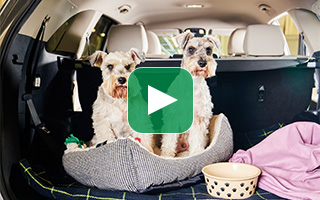
Procedures for travel
Kennel facilities onboard our ships
Guide, Hearing or Assistance Dogs
Animal movement restrictions
Pet Passport requirements and Government regulations
Irish Ferries participates in the Pet Travel Scheme. This is a Government controlled system that allows movement of dogs, cats and ferrets within EU member states without quarantine restrictions. Motorists and foot -passengers may bring their pet with them.
All Dogs, Cats and Ferrets travelling under this scheme need a Pet Passport. It is your responsibility to ensure that all the entry conditions are met otherwise your pet will not be allowed to travel.
Government Regulations - Pets travelling to Ireland
Dogs, cats and ferrets must have an official recognised EU Pet Passport with veterinary endorsements certifying compliance with tests, treatments and vaccinations. The endorsements must be dated (including expiry dates), stamped and signed by an authorised Veterinary Practitioner.
Brexit: Pets travelling FROM Northern Ireland:
After 31st December 2020, you will still be able to travel with your pet (dog, cat or ferret) to France and from Northern Ireland. Pets with Ireland and Northern Ireland issued pet passports will continue to use the existing pet passport scheme and EU pet travel rules.
Pets with GB issued pet passports cannot use the existing pet passport scheme but will instead need an animal health certificate (AHC). Allow at least 1 month to arrange this and relevant vaccinations.
Ireland: https://www.gov.ie/en/publication/b76e9-brexit-movement-of-pets/
UK: https://www.gov.uk/guidance/pet-travel-to-and-from-great-britain
Regulations:
- Microchip - The microchip number on the animal must correspond with the number on the passport presented. The microchip should comply with ISO standards 11784 & 11785. Clearly legible tattoos are also accepted – the tattoo must have been applied before 3rd July 2011 .
- Rabies – All cats, dogs and ferrets must have a current rabies vaccination (administered at least 21 days prior to entry). The rabies vaccination must be administered by a registered Veterinary Practitioner and entered into the E.U. Pet Passport (Section IV. Vaccination Against Rabies), signed, dated and stamped.
- T apeworm Treatment–(Echinococcus) applies to dogs only. Tapeworm treatment must be administered by a registered Veterinary Practitioner and entered into the E.U. Pet Passport (Section VII. Echinococcus Treatment) signed, dated, timed and stamped. Tapeworm treatment must be administered between 24 hours (1 day) and 120 hours (5 days) before scheduled arrival time into Ireland. Treatment against ticks is no longer a compulsory requirement but dog owners are strongly advised on animal health grounds to avail of tick treatment for their dogs when getting the tapeworm treatment.
All other animal types must have an Import licence to travel to Ireland. These licences are issued by the Irish Government. To obtain a licence please check the Irish Government website www.agriculture.gov.ie
Government regulations - Pets travelling one way to France or any other EU Member state
The minimum requirement for dogs, cats and ferrets crossing any EU border is:
- EU Pet Passport with veterinary endorsements certifying compliance with tests, treatments and vaccinations.
- Rabies – All cats, dogs and ferrets must have a current Rabies vaccination (administered at least 21 days prior to entry). The Rabies vaccination must be administered by a registered Veterinary Practitioner and entered into the E.U. Pet Passport (Section IV. Vaccination Against Rabies), signed, dated and stamped.
All other animal types must have a certificate of good health and possibly an import licence before travelling. Check with the agricultural agencies in the country you are travelling to for more information:
- Ireland: www.agriculture.gov.ie
- UK: https://www.gov.uk/government/organisations/department-for-environment-food-rural-affairs
- France: https://agriculture.gouv.fr/french-ministry-agriculture-and-food
Procedures when travelling with Pets
- Check-in time for passengers travelling with animals is at least 2 hours prior to the scheduled departure time of the ferry - otherwise you and your pet will be refused travel.
- You may be asked to help staff to use the scanner as the animal will be more comfortable with the owner.
- Irish Ferries charge kennel fees of € 30 / € 45 / €60 per animal per journey for travel. This fee includes the use of a kennel/cat box on board and each animal must occupy a separate unit.
- Pets are not allowed to remain in your car or travel on the passenger decks during the voyage (guide dogs excluded)
Car passengers
- When travelling from Cherbourg port please go to the terminal building before you go to the car check-in point so that the pet microchip details can be checked.
Foot Passengers
- Pets (all dogs and cats) must be transported to and from the ferry in a secure, rigid and appropriate pet cage or box (please bring your own).
- The animal must be able to stand or lie down in comfort.
- The owner of the animal must be able to carry the cage or box from the terminal to the ship.
- If you turn up at the port without an appropriate pet cage or box you will not be allowed to bring your pet on board. There are no exceptions to this rule.
Kennel facilities onboard
Oscar Wilde A mix of kennels up to 89cm high, 70cm wide and 95cm deep.
The kennels are situated on car deck 5, whilst the cat-boxes are situated on deck 4. The dimensions of the pet units are:
Small kennel = €30 (51cm high, 75cm wide, 95cm deep) Medium kennel = €45 (70cm high, 75cm wide and 95cm deep) Large kennel = €60 (100cm high, 75cm wide and 95cm deep)
Cat-Box = €30 (50cm high, 80cm wide, 72cm deep)
Additional Notes
- Please ensure that you book a kennel size appropriate for your pet. If you reserve a kennel that is too small for your pet, we reserve the right to refuse travel. Irish Ferries also reserve the right to optimise the usage of the kennels onboard based on demand and on the size of the pet. Where Irish Ferries judge it appropriate to move a pet to a smaller kennel, no refund will be paid. You will be assigned a kennel number and your pet must remain in that kennel for the duration of the voyage. When you add a kennel to your booking you will have to confirm that you are aware of and will adhere to the special terms and conditions of the Pets travel scheme.
- Early pre-booking of pets is essential and is subject to space, availability and terms & conditions of the Pet Travel Scheme. There are only a limited number of kennels available on each sailing and our reservations system is programmed to accept two kennels per booking. If you wish to bring a third pet please contact us at [email protected] and we will let you know if a suitable kennel is available on your chosen travel dates.
- If your pet is travelling both ways you must make a return booking and reserve a kennel on each journey. If your pet is not returning with you please contact us before travel commences at [email protected] so that we can note your booking accordingly. If you are using our Landbridge services to or from Europe (travelling via the UK) please ensure that you are compliant with our partner carriers' regulations regarding the transport of pets.
- Where specified by Irish or French legislation, if your pet is required to be muzzled and is not, you will be refused travel.
- You will be allowed to visit your pet during the crossing and bring him/her for a short walk to answer calls of nature. A crew member will accompany you to the kennels. For safety reasons children are not permitted to visit the car deck during the crossing. Visiting times are displayed at reception on deck 7.
- We suggest you bring some comfort blanket or bedding for your pet and a water bowl.
- Cat-boxes are reserved exclusively for cats. Dogs and ferrets can be booked in kennels.
Dangerous Dogs Check to see if your dog is considered a dangerous breed. The importation and transit to and around France of dangerous dogs Category 1; such as Staffordshire terrier, American Staffordshire terrier (Pit bulls , Mastiff (Boer bulls) or any dog of the type known as the Tosa without a pedigree is not permitted. All dogs in category 1 type should be properly muzzled or they will be refused travel. For further details regarding dangerous dogs please see https://agriculture.gouv.fr/french-ministry-agriculture-and-food
Guide, Hearing and Assistance dogs
Assistance and Guide dogs are welcome in all public areas of our ports and ships, subject to the necessary certification and pet passport/animal health documentation.
All assistance dogs must have the necessary accreditation and pet passport/animal health certificate documentation when checking in at the Port. They must also wear the correct jacket and harness at all times when travelling, and are allowed to remain with their owner in the passenger areas for the duration of the voyage. For sailings where foot passengers are permitted, passengers with an assistance / guide dog are permitted to walk their dog through the terminal building and onto the ship.
We accept assistance dogs who are recognised by the Assistance Dogs International (ADI) and International Guide Dogs Federation (IDGF) programmes. These programmes ensure Assistance dogs are specifically trained to assist and support people with a disability, whilst also being fully trained to work in a variety of environments and are accustomed to public access and interacting with many different types of people.
Where they are not recognised as an assistance dog by ADI or the IGDF , evidence/accreditation must be provided by a qualified dog trainer to prove that they have passed an assistance dog public access certification test in accordance with the requirements set out by ADI in order to be accepted as an assistance dog on our ships.
If travelling with an Assistance / Guide Dog, please contact us at [email protected] at least 2 working days in advance of travel so that our Teams on-board can be notified and will be ready to offer special assistance if required.
The pet passport / animal health certificate etc requirements for entry for assistance dogs are the same as all other pets. Please consult the detail of these requirements by route:
- Britain - France
- Ireland - Britain
- Ireland - France
Emotional Support Animals
Emotional support animals who do not meet the requirement of having assistance dog public access certification in accordance with the requirements set out by ADI can travel with us, however they will have to follow the same rules set out for our regular pets, and will not have access to the passenger areas on board. The access for un-certified emotional support animals is therefore as follows:
- Stay in vehicle during crossing (Ireland-UK & Dover - Calais)
- Stay in Kennels during crossing (Ireland-UK & Ireland-France)
Movement Restrictions
Movement Restriction on the Number of Pets.
- From the 29th December 2014, the maximum number of pets that can travel with one owner or authorised person under the pet travel scheme will be five. Anyone wishing to travel with more than 5 pets will therefore need to comply with the commercial movement rules (see below).
- An exemption from this requirement will be introduced where more than five pets, aged over six months, are travelling with their owner, or an authorised person, to attend a show, competition or sporting event (or training for such an event). Written evidence of attendance/registration will need to be provided. In all cases the transport vehicle must be fit for purpose, for example, in relation to size, type and ventilation. Kennels are available on board and can be booked with Irish Ferries.
Commercial Movement of Animals.
- Any other shipment of animals that exceeds five, (not including those attending shows or sporting events) or any movement of animals for commercial purposes (for sale, for breeding or commercial gain), cannot be booked on Irish Ferries Passenger services. A booking will need to be made with Irish Ferries Freight Services (contact +353 (0) 818221560.
- Customers should also note that there are separate requirements for commercial shipments of animals, including additional approval documentation, for the animals, the vehicle type and in some cases, for the driver of the vehicle. Further information can be obtained from the office of your nearest animal health Veterinary Practitioner.
If your question has not been fully answered in this FAQ please contact us and let us know [email protected]

How to travel with a dog
W hether you’re off on vacation or you’re traveling to visit friends or relatives, you might be thinking about taking your dog with you. But, if you’re wondering how to travel with a dog, you’re in the right place.
If you’ve not really traveled with your pup before, the first big journey can seem daunting at first – but it doesn’t need to be! Do plenty of preparation – and don’t forget those all-important dog treats – and you’ll increase the chance of your trip going without a hitch.
To find out how to travel with a dog, whether you’re going to another country or simply catching a train to a nearby city, just keep reading.
Preparing your dog for travel
If your dog isn’t used to traveling, or hasn’t ventured much further than the vet or dog park before, it makes sense to help prepare them beforehand.
If your dog isn’t used to traveling at all, you may want to start with some short trips in the car, perhaps to the park or to see a friend in the neighborhood. Doing this is also a good way to find out if your dog gets travel sick or not.
Perhaps your dog needs to go in a crate when you travel. If so, it’s best to get your pet used to the crate or carrier before you begin your trip - you'll find useful tips in our how to crate train a dog guide.
And don’t forget to prepare yourself! Make sure you know exactly what the rules and requirements are whether you’re flying to another country or driving to your friend’s house across the country.
Things to bring with you
Make sure you’ve got a leash, in case you and your pup need to stretch your legs or they need the toilet – you don’t want to risk them running off in an unfamiliar location. But at the same time, ensure they have identification on their collar, just in case you do lose them.
Bring plenty of treats and toys, too, perhaps one of their favorite puppy toys or blanket. These are particularly important if they might be apart from you, maybe in the cargo hold on the plane or simply in a crate in the back of the car.
Bottled water is important, and of course, your pup will need their regular food and medications as normal. And, depending on your method of travel and destination, you may need a health record from your veterinarian.
Traveling via car
For the safety of both your dog and other passengers, it’s best not to let your dog roam free in the car. Ideally, they should travel in a crate that’s secured in place with a restraint or seat belt.
“If traveling in the car, a dog should have a comfy bed or crate for them to settle into,” according to Dr. Anna Foreman , vet at Everypaw. “Many dogs suffer from travel anxiety or sickness – having a safe place is important to help resolve these.” There are various signs of anxiety in dogs that can help you spot that your canine is feeling uneasy in the car like, restlessness, being extra vocal or increased nose licking.
If you’re driving, you might want your pup right next to you on the passenger side. But it’s best to keep them in the back instead, as airbags have been known to injure pets in the event of a crash.
“A dog must be restrained when in a car,” says Dr. Foreman. “This should either be through being in an enclosed space, such as a crate, or in a trunk with a guard between the trunk and main car body, or be secured to a seatbelt point via a harness.”
We’ve all seen dogs riding in the car sticking their heads out of the window, but there’s a risk of injury here from flying debris – and they could even get ill if they get too much cold air in their lungs.
Remember to give your dog rest stops, too. Particularly if it’s a longer journey, they’ll need to walk around for a little while and go to the toilet too – you won’t want any accidents in your car!
And, of course, you shouldn’t leave dogs in hot cars even for a short period of time. They can suffer organ damage or even death.
Traveling via train
If you’re traveling by train with your dog, you should check with your train company to find out whether your dog is actually permitted onboard. On some trains, dogs are only allowed on if they’re under a certain weight.
If your dog is allowed on the train with you, it’s important to be mindful of other travelers. For their comfort, and that of your dog, ensure that you keep your pup with you at all times, and keep them occupied with treats and toys.
When traveling by train with your dog, it’s your responsibility to make sure that they have enough food, water, and exercise, and go for frequent toilet breaks.
Traveling via air
When traveling with a dog, driving tends to be an easier option. But if this isn’t possible, air travel is generally a safe choice for your pet.
Often, airlines will request a health certificate, so it’s best to visit your vet beforehand to make sure that your dog is in good health and that their vaccinations are up to date. Different airlines may have different rules and regulations, so make sure you know what yours requires before you fly out.
When flying abroad, your pets might need to be quarantined upon arrival, and you may need to fill out forms. Again, this can vary, so familiarize yourself with the rules in the country you’re traveling to.
Some airlines let dogs travel in the cabin with you, if they’re small enough. This is the best option, as you can reassure them if they’re nervous. However, there are often limits to how many pets can travel in the cabin, so it’s best to find out if your dog can travel in the cabin with you in advance.
“Pharmaceutical agents such as sedatives are not recommended to be given to a dog before airplane travel, as a dog is not monitored when in the hold,” explains Dr. Foreman. “However the use of calming nutraceuticals such as Adaptil or Zylkene are permitted.”
Each year, some pets do sadly die when they’re transported in the cargo hold, but the vast majority get to their destination completely fine. However, you can increase the likelihood of a stress-free flight by choosing direct flights and ensuring that you’re on the same flight as your pet. Allow your pet a few weeks to become familiar with their travel carrier before the flight, too, and carry a recent photograph of your pet to help in the search should they become lost.
And while air travel is generally as safe for your dog as it is for you, it can be slightly more dangerous for brachycephalic, or short-nosed dogs, like pugs and French bulldogs. “The risk of air travel with brachycephalic breeds is much higher than those with normal length noses as they are much more likely to go into respiratory distress when stressed, especially dangerous if not monitored,” explains Dr. Foreman.
Traveling via water
Pets are only welcome on a few ships – most often on ocean crossings – with many requiring that dogs are confined to kennels. Therefore, it’s best to check before you book.
“If traveling by boat, a dog is more likely to become travel sick, particularly during bad weather,” says Dr. Foreman. “Dogs who do not like water should not travel on boats, or if they must then a larger boat is less likely to cause stress. On smaller boats, it is recommended for a dog to have a life jacket on in case of emergency. Do not let a dog drink sea or dirty water!”
Traveling with your dog can be easy – and even fun. Sometimes, things can go wrong, but if you take precautions before and during your trip, it’s more likely that everything will go smoothly.


Travelling to Northern Ireland with a Dog in 2024
Northern Ireland is a fabulous destination to visit with your dog, whether you’re visiting family or friends or touring the beautiful countryside.
However, due to being situated across the Irish Sea and being treated differently since the end of the Brexit transition, it’s potentially trickier to visit than the other countries of the United Kingdom .
Read on for answers to all the questions you may have about the latest logistics of taking a dog to Northern Ireland, from whether you need an animal health certificate to the dog-friendly ferries available.
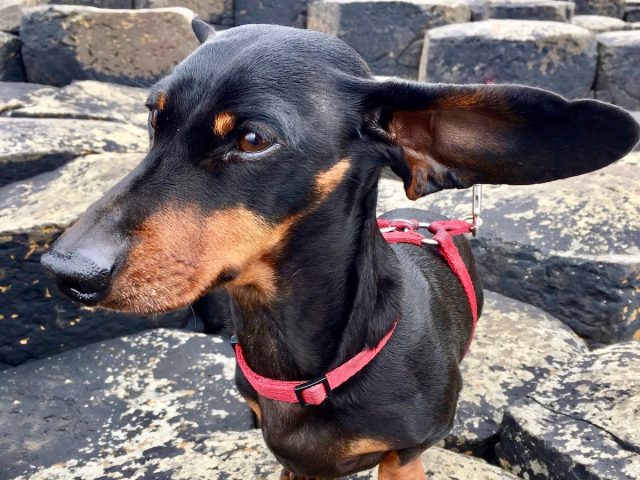
Can I Take My Dog to Northern Ireland from Great Britain?
From 1st January 2021, once the Brexit transition ended, the rules to travel with your dog from England, Scotland or Wales to Northern Ireland changed. Previously, there was no need for a pet passport or any other special preparations, but this is technically no longer the case.
In 2021, Great Britain became a “Part 2 listed third country” for the purposes of pet transport to the European Union. This includes England, Scotland and Wales, along with the Channel Islands and Isle of Man.
However, there was no change in the status of Northern Ireland, which is effectively classified as still part of the European Union for the purposes of pet transport.
Current Requirements to take a Dog to Northern Ireland
This means that dogs travelling from Great Britain to Northern Ireland are meant to require preparation similar to visiting any other country in the EU.
Your dog technically requires a microchip, a valid rabies vaccine (at least 21 days before travel), worming treatment (done by a vet, between 24 hours and 5 days of travel) and an animal health certificate (within 10 days of travel).
Pet passports issued in EU countries can be used, in place of the animal health certificate. Pet passports issued in Great Britain cannot be used to travel to Northern Ireland, nor can old-style Northern Ireland pet passports, only the new-style Northern Ireland pet passports introduced in 2021.
Additionally, when travelling to Northern Ireland you’ll need to use a “travellers’ point of entry”. This includes Belfast Port, Larne Port, Belfast International Airport, Belfast City Airport and City of Derry Airport.
For more information see the DAERA website . However, read on…

But Is This Being Enforced?
The good news though, is that these new requirement are not being enforced .
After an extended period in early 2021, when there was a grace period before the checks started being enforced, in September 2021 it was announced that checks on all pet dogs, cats and ferrets travelling from Great Britain to Northern Ireland would be suspended indefinitely .
As of December 2023, this is still the case. It has been announced this will continue until the Windsor Framework pet travel provisions are implemented (see below) – which currently seems likely in 2024.
This means that for now, you no longer technically need to visit the vet to pay for an expensive animal health certificate, or have a worming treatment done by a vet. There is also no enforcement of rabies vaccines for pets crossing to Northern Ireland.
Future Requirements to Travel to Northern Ireland
During February 2023, it was announced that the Windsor Framework had been agreed to by the UK Prime Minister and the European Commission President, replacing the old Northern Ireland Protocol.
The requirements for pets travelling from GB to Northern Ireland under this framework will be simplified, assuming that they are not travelling onwards to Ireland or other EU countries. Pets will no longer need a rabies vaccination or an expensive pet health certificate from their vet.
Instead, it is stated that pet owners within Great Britain with microchipped pets can either sign up for a lifetime travel document for their pet , available easily online, or there will be a process built into the booking steps for ferries and flights. Presumably, you will also need to declare that you pet will not be travelling onwards to the Republic of Ireland or any other EU country.
The implementation of this protocol will be phased in, will changes to pet travel initially expected by the end of 2023. However, there is no update to the situation, so this will more likely happen in 2024 .
Unfortunately, it does not seem likely that the UK will become a Part 1 listed country, similar to Switzerland, with its own pet passport and easier travel to all EU countries, not just Northern Ireland.

Returning to Great Britain with Your Dog
While there are numerous changes to travelling from Great Britain to Northern Ireland with a dog (not that they are currently being enforced), there are no changes travelling in the opposite direction.
Technically dogs travelling to Great Britain need to be microchipped and vaccinated against rabies, but there is no requirement for a pet passport or health certificate (that would prove this) for travel from Northern Ireland to Great Britain.
Dogs travelling from Northern Ireland to Great Britain are also not required to have a worming treatment, nor are they required to travel on an approved route. For more information, see the UK government website .
Dog-Friendly Ferries from Great Britain to Northern Ireland
The best way to travel from Great Britain to Northern Ireland with your dog is on a dog-friendly ferry. As it’s not possible to fly with your dog in the cabin to Northern Ireland, with only a handful of UK airlines allowing pets to fly as checked baggage or more often cargo , I recommend taking a ferry rather than flying.
There are currently three ferries to choose from between Great Britain and Northern Ireland, operated by Stena Line and P&O Irish Seas. (Irish Ferries doesn’t operated any ferry routes to Northern Ireland.) These are the three routes, ranked in order of dog-friendliness…
Note: This post contains affiliate links, which means I may receive commission if you make a purchase using the links.
Stena Line Ferry from Cairnryan to Belfast
After taking this ferry with my dog, I selected the Stena Line Ferry from Cairnryan to Belfast as the most dog-friendly ferry to Ireland (whether Northern Ireland or the Republic of Ireland).
As well as being a quick crossing (2 1/4 hours), with up to six services daily, small pets in a pet traveller case are allowed to travel on the passenger deck by your side, in a Pet Lounge on Deck 7 that opened in May 2023.

Note that the pet traveller case should be a maximum size of 91cm x 56cm and 62cm high, and must have a secure door, zip or lock mechanism, with your pet totally enclosed. Regular bags are not allowed. Plus naturally pets must remain in the carrier at all times, except dogs are allowed in the dedicated outdoor deck area.
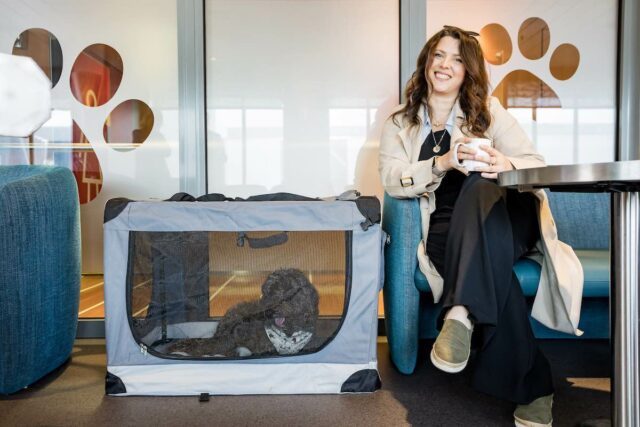
In November 2022, it was announced that Stena Line would no longer permit small pets to travel in a carrier onboard this route, due to health, safety and hygiene reasons, but this decision was reversed, with just the new requirement to travel in the dedicated Pet Lounge, for a fee. (Thanks to everyone who helped signed the petition!)
In early 2023, pet-friendly cabins were announced on the majority of other ferries crossing the Irish Sea, but this won’t apply on this short crossing.
Larger pets can either be checked into a kennel or left in your car, both free of charge. All pets must be pre-booked, at the “Stena Plus & Onboard Extras” step of the booking process. Foot passenger are also allowed to transport pets.
Stena Line Ferry from Liverpool to Belfast
In early 2023, Stena Line announced that there would now be pet-friendly cabins available on a number of additional routes, including the Stena Line Ferry from Liverpool to Belfast. So, I’ve bumped up this ferry in terms of pet-friendliness out of the ferries between Great Britain and Northern Ireland.
Up to two pets are permitted in each vinyl-floored pet-friendly cabin, with water bottles and pee pads provided. Just bring your own bowls and beds. Make sure you book these cabins well in advance, with bookings available both online and through the call centre.
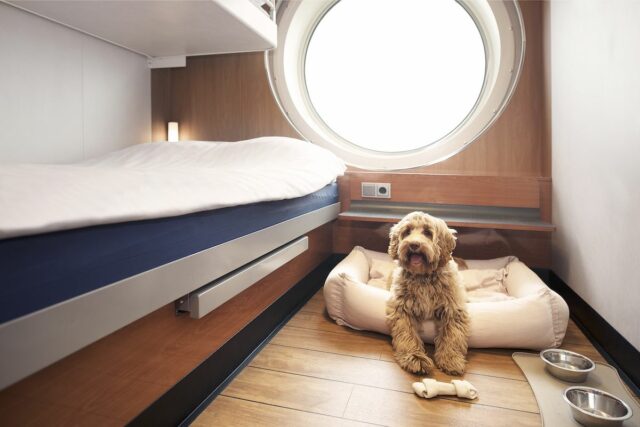
When walking to your pet-friendly cabin, carry your pet in a carrier or walk them on a leash, with muzzles also recommended. There’s also a dedicated outdoor area on the ferries on this route, where your pup can get some fresh air and have a toilet break.
The alternative options for transporting your pet are in your own car (if you are travelling with one), at no cost, or in a kennel in the “Dog Lodge” on the promenade deck, for an additional £15.
Pets travelling in the Stena Line Dog Lodge can be accessed and exercised during your crossing. Even free dog food is available. Just note that the kennel size may be a little too small for larger dogs, at 100 x 82.5 x 75cm.
No matter which option you choose for transporting your pet, you need to specify you’ll be travelling with pets at the “Stena Plus & Onboard Extras” step in the booking process, and select the relevant option. The crossing is 8 hours, with both a day-time and overnight option available.

P&O Ferry from Cairnryan to Larne
The final pet-friendly ferry crossing from Great Britain to Northern Ireland is travelling on the P&O Ferry from Cairnryan to Larne.
Out of all the crossings, this is the shortest, a quick 2hr trip. However, pets are only allowed inside vehicles (at no additional charge), with no kennels on offer. For this reason, foot passengers are not allowed to transport pets on this ferry.
As there are up to 7 daily crossings, both during the day and night, I would recommend selecting a cooler time of day for a crossing with your dog during summer. Add up to four pets to your booking when selecting the number of passengers.
Previously, it was possible to ask a staff member to visit your pet during the crossing, if you were concerned. However, I can no longer see that this option is available – double check if it’s important to you.
Click here for more information

Taking Your Dog from the Republic of Ireland to Northern Ireland
Prior to Brexit, it was easy to take your dog in a car across the border from the Republic of Ireland to Northern Ireland, and vice versa, with generally no checks performed.
This continues to be the case. The DAERA website clearly states that there is no change to the requirements for pets travelling in between the Republic of Ireland and Northern Ireland, due to Northern Ireland still being part of the European Union for pet travel.
You are technically required to have a pet passport for your dog, including microchip and valid rabies vaccination, as for crossing any country border within the EU. However, DAERA state that a “risk-based approach is taken with regards to the level of compliance checks on pets”, with checks rarely occurring.
There is no need to worm your dog travelling between Northern Ireland and Ireland, in either direction, so proof of this is not required.

Travelling Directly to Northern Ireland with a Dog
Prior to the end of the Brexit transition, if you were planning on travelling directly to Northern Ireland from outside of the UK and the Republic of Ireland with a dog, you needed to apply for Import Authorisation for your dog.
An Import Authorisation was required to be obtained at least 10 days in advance. You were also required to engage and pay for the services of an approved quarantine establishment to check your pet’s paperwork on arrival.
This was because this was not an approved route under the Pet Travel Scheme. The approved routes were for pets to firstly enter Great Britain or enter the Republic of Ireland , then travel onwards to Northern Ireland.
However, it is not clear if this requirement still applies following the Brexit transition. The DAERA website simply states that if you are transporting pets directly to Northern Ireland via air, you should email [email protected] .
You May Also Like
- How to Travel with a Dog Between the UK and Europe
- Travelling to the Republic of Ireland with a Dog
- Dog-Friendly Belfast
About the Author

Shandos Cleaver is the founder of Travelnuity: Dog-Friendly Travel. She has travelled extensively with her Miniature Dachshund, Schnitzel, including to 33 countries across Europe, every state and territory of Australia except Tasmania, and 10 of the United States. She’s passionate about providing inspiration and information to others wanting to travel with their dogs, whether close to home or internationally.
Inspired? Pin this to your Pinterest board!

61 thoughts on “Travelling to Northern Ireland with a Dog in 2024”
Hi, I am travelling in August with my puppy on the Cairnryan to Belfast route. I am very confused as there is no clear information online regarding travel of pets between England/Scotland and Northern Ireland. I understand there is no requirement for a passport, although this may change in January 2021 due to ‘Brexit’. What i do not understand is if my puppy requires additional vaccinations. She is up to date on her vaccines but does not have Rabbies, she also got a flee and worming treatment a few months ago but does she need this done again? My Vet does not seem to understand that Northern Ireland is part of Britian and i do not want to give my pet anymore injections than is required. Please help! Thanks in advance!
Hi Jenny, There is no requirement for additional vaccinations or flea or worming treatments to take your dog to Northern Ireland. Here is the Northern Ireland government page about travelling with pets: https://www.daera-ni.gov.uk/articles/travelling-pets . While it doesn’t state outright on the page nothing is required, if anything was required it would be covered here. When I travelled on the Cairnryan to Belfast route, I didn’t require anything. If you are in doubt, I recommend ringing up Stenaline to double check. Enjoy your trip to Northern Ireland! Shandos
You will be OK Jenny, the rules will not be enforced for domestic pets until after October.
Hello, I have a puppy with full vaccinations and an older dog with none since being a pup however neither have pet passports and we are looking to travel in November 2020 – What is the liklihood that we would be turned away at the port of dublin due to not having the right documentation as we would be looking to do this crossing as cheaper? Just worried we would make a
I recommend getting a pet passport for both your dogs. There’s plenty of time to do so. I think many years ago pet passports weren’t often checked, but have been increasingly checked in recent years, especially with the end of the Brexit transition coming up at the end of the year.
I travel back and forward between Scotland and Northern Ireland as I have family and grandchildren in NI. I part own a house in Scotland and part own a house in Northern Ireland. What requirements do I need ensure my dogs are not put into quarantine. I travel at least three times a year. I have 3 dogs born in Scotland and have never required any passport or rabies vaccinations as Scotland and NI have no rabies. What do I require for them to travel back and forward several times a year. I also have a 6 month old pup who has her own Latvian passport. What do I require for her to travel back and forward. Does this passport cover her for 3 years to travel to NI. Does she have to get any checks when returning from the NI to Scotland. Do I have to get Rabies vaccinations every 3 years for every one of my dogs. Do I have to get vet checks prior to my returning from the NI. Is there a difference in the rules whether I stay in NI for 3 / 4 weeks or 4/5 months. Please clarify. Can you please contact me via my email.
Hi Marigold – sorry about the delay replying, I’ve had a short vacation over Christmas.
Unfortunately, the situation is changing from 1st January. For your dogs travelling to Northern Ireland from Scotland, they will now required a microchip, rabies vaccination (at least 21 days in advance), worming treatment (between 1 to 5 days before travelling) and health certificate (within 10 days of travel). And yes your dogs will require a rabies booster every 3 years.
To travel back to Scotland, none of this is required, if you stay for under 4 months. The pet health certificate issued to travel to NI can be used to return to Scotland, but is only valid for 4 months. If you stay longer, you need to visit a vet to get a GB pet health certificate, unless you pet has an EU pet passport.
For the dog with the Latvian passport, you can use this in place of the pet health certificate. This passport will remain valid while the rabies vaccine is valid or longer if her rabies boosters are done in the EU (presumably including Northern Ireland). There may also be the option of getting your other dogs a Northern Ireland issued EU pet passport, which would replace the health certificate, but considering you also need the worming treatment each visit to go to NI you still need to visit the vet.
The UK government does note: “The UK government recognises that pet owners and assistance dog users will need time to adjust to these changes. It’s working with the Department of Agriculture, Environment and Rural Affairs (DAERA) on an enforcement approach that takes these challenges into account.”
For more information and any further clarifications, see: https://www.gov.uk/guidance/pet-travel-to-europe-from-1-january-2021 and https://www.daera-ni.gov.uk/articles/travelling-pets .
Enforcement of the rules for domestic pets has been put back to October 2021. Perhaps there will be some compromise works out by then.
This information is dated , best to follow .gov .uk travelling with my pet, don’t leave it to chance..x
Aileen – I have recently updated this post with the latest government news.
From DAERA website Pet Checks Routine checks on the non-commercial movement of pets from GB to NI will be delayed until at least 1 October 2021
I live in Southern Ireland and have reserved a pedigree puppy in Northern Ireland which will be ready for collection at the beginning of Feb. I am confused reading the varios information and wonder if you can kindly let me know if there is anything I need to be aware of or to ensure is in place/done before bringing the puppy to southern ireland? Many Thanks
Normally, your dog would need a microchip and rabies vaccine at least 21 days before movement, but there are exceptions in place for puppies, that are too young for the rabies vaccine. These are the EU rules: https://ec.europa.eu/food/animals/pet-movement/eu-legislation/young-animals_en . However, I don’t think Ireland allows the exception, looking at this. I’m not fully across this, as I’m more familiar with the rules for older dogs being taken on vacation. Also, I’m not sure whether the transport is commercial or non-commercial, I think it depends on whether you go and pick up your puppy.
Hi Shandos,
I’m travelling from Northern Ireland to Liverpool next month. I’m confused if there is any requirement for my dog travelling to the UK from Northern Ireland?
It sure is a lot more confusing today! If you’re only travelling to GB and not returning to NI, there are no passport or vaccine requirements, other than the standard requirement for dogs to microchipped. This is covered half-way down this page: https://www.daera-ni.gov.uk/articles/travelling-pets . However, the extra steps apply if you return to NI.
Thanks you so much for your reply. That’t really helpful 🙂
Hi Shandos I am moving to the Republic of Ireland later this year. I would like to travel from Scotland via ferry with my dog to Northern Ireland and then by car to the Republic of Ireland. Is this feasible considering Brexit? the Irish border? She has a pet passport. Appreciate your advice.
Nan – I haven’t been keeping up to date with changes for the movement of people (as I’m currently in Australia), but for pets, the new key border crossing is when you cross to Northern Ireland. As well as requiring a microchip and valid rabies vaccine at least 21 days before entry, your dog will also require a worming treatment at a vet and health certificate. The pet passports issued before 2021 are no longer valid for crossing the border. I recommend visiting a vet well before your travel.
Once in Northern Ireland, I expect you will not need to show anything when driving across into the Republic of Ireland (as occurred when I visited previously), but it is expected that your dog is vaccinated for rabies and you have a health certificate or passport.
Enjoy your trip!
I live in Northern Ireland, I have a Minature Schnauzer which is fully vaccinated and micro chipped, I and travelling to Scotland for a wedding in July 2021, do I need a pet passport to take her and bring her back. If I do how do I go about it and what is the cost.
You don’t need anything extra to take your dog to Scotland, but you’ll need extra steps to return to Northern Ireland with your dog. Your dog will require a worming treatment done by a vet between 24 hours and 5 days of returning to Northern Ireland. This should also be able to be done in Northern Ireland before leaving, if your trip is short. You’ll also need either an animal health certificate or one of the new style NI pet passports. I recommend speaking to your pet before your trip. Unfortunately, I don’t know the current cost.
From Daera website Pet Checks Routine checks on the non-commercial movement of pets from GB to NI will be delayed until at least 1 October 2021
Enjoy the wedding
I’m moving to NI from England in June. I have 3 small dogs and a house cat. I contacted DEFRA and they informed me checks won’t be enforced until july 1st. 2 of my dogs have heart conditions and have previously had adverse reactions to vaccines. I was advised that there were no exceptions in the legislation but I will unlikely be checked. I am a single parent of two young children, if they refuse us entry or insist on quarantine we will end up homeless or without our beloved animals and in debt from quarantine costs. I’m terrified. Do you have any advice?
Based on DEFRA’s advice, I’d probably take advantage of the period prior to 1st July to move. I had heard they weren’t doing checks early in the year, but this is even later than previously mentioned, probably due to Covid. As an emergency backup, find out the details of a kennel or vet near your departure point, and arrive extra early, in case something does come up.
The checks are on the NI side not GB side. They’ve now delayed the checks till 1st October. Hopefully they will be scrapped all together.
The new entry rules to NI from the UK regarding pet passports are not currently being enforced by NI. This is clearly stated on the NI gov website and in recent news media. You do need a pet passport however to cross into the Republic. So your above advice about requiring rabies and a health certificate etc is not correct yet. A good opportunity to get your pup into NI to get an NI issued EU pet passport!
That’s great to read, earlier in the year they were planning to enforce a lot earlier.
Hi We are travelling from cainryan to Belfast for 2 weeks in august with our dog. Can anyone confirm if we need to get the animal health certificate and worming to get into Northern Ireland? I can see that checks are delayed until 2021 but didn’t want to get caught out Thanks
I recommend doing it still, just for your peace of mind, although the reports are that it isn’t being enforced yet. But it might start being enforced!
Help!!! I am so confused. I am moving to Belfast after FINALLY getting my US passport renewed (nightmare!!! *covid*)
Do I still need to get my dog and cat pet passports for entry if traveling after Oct 1 of this year?
Thank you Andrea
If you’re coming from the US, you’ll need to get UK pet health certificates completed and certified by USDA APHIS. The EU and other pet passports are only relevant once living in the jurisdiction.
Planning to travel to NI in July 2022. Are the checks on pets entering NI still suspended, have they been scrapped ? If reinstated are they likely to be enforceable immediately ?
The checks are still suspended. It hasn’t been announced that they are being scrapped, but I believe the government is hoping GB will move to the same category as Switzerland, where they won’t bd required. I recommend checking this page for the latest: https://www.daera-ni.gov.uk/articles/travelling-pets
Thank you – very helpful
Since the UK left the EU and the transition period ended, according to DAERA, a worming treatment has technically been required to enter NI from GB. However, checks are not currently being made, so this is not being enforced. Hopefully the situation with pet travel to and from GB changes again, back to being more similar when UK was part of the EU.
Hi, I am travelling from Northern Ireland to England next week with a puppy of 10 weeks old. We are travelling overnight from Belfast to Liverpool and after researching the dog lodges on Stenaline, I would not be happy to leave such a young puppy on their own surrounded by other dogs. We would like to leave the pup in the car but unsure if we can visit it at anytime as I have heard that once the boat set sail that you are not allowed in that area. What would you advised as I am concerned for the pup because of them spending first night away from litter and long journey.
That’s a tough situation. It’d be better if you could take the ferry from Belfast to Cairnryan, as small dogs can travel in a carrier bag onboard and it’s a quick trip. However, I understand that ferry to Liverpool is probably better suited for you. I haven’t heard that you can visit dogs in the car after departing, can you call up the customer centre and ask? They might make an exception in certain cases, too. Otherwise, it’s probably best to put the pup in the dog lodge so that you can regular walk him/her.
Hi, I’m travelling from Sri Lanka to Northern Ireland. I want to know if there’s any possibility of taking my dog as excess baggage to the UK, or do they have to travel as manifest cargo? Any help you can give me regarding this would be appreciated.
Unfortunately dogs travelling to the UK need to travel as manifest cargo, not excess baggage. The alternative is to fly into the continent, such as Paris or Amsterdam, then travel via ferry/car/train to Northern Ireland.
Hi, I am currently living in Northern Ireland and my cat is living in Germany. I want to go back to Germany and bring my cat back to NI, is it possible I take the flight from Germany to Dublin with my cat and then take the bus to Belfast? I want my cat to stay with me in the cabin, do you know any airlines allow me to do that? Thanks a lot for you help in advance.
Wang – It should be possible to fly your cat in the cabin to Dublin. Although most airlines don’t allow this, some airlines do, although I’ve heard from other travellers that airline staff say different things at different times – see the comments on my post about travelling to Ireland, https://www.travelnuity.com/taking-a-dog-to-ireland/ . Two possible options are Vueling and Iberia Express. It’s probably not possible to take your cat on the bus, but cats are allowed to sit on your lap in a secure carrier on the train from Dublin to Belfast. Hope this helps!
Hi,I would like to visit my relatives in NI. I have have an assistance dog with ID passbook, and have a record of all his vacations, flea and tick, and worm treatment from berth, which is four and a half years worth. 1. Does he have to have a rabies jab. 2. I presume I can take him with on any crossing.
Rabies vaccines are still not being enforced on dogs travelling from GB to NI, and there are no requirements for the return journey. Assistance dogs should be accepted by any ferry crossing, although I’m not across documentation requirements.
Hi, I am hoping to travel from the US to Ireland with my Dachshund. I got her a France Pet Passport in 2021. Do you know if this will be enough? Of course, she has a Microchip and is up to date with her shots. I am looking to do a road trip through Europe with her.
That should be fine, as long as her latest rabies shot is in the pet passport, not on a separate certificate. Some airlines also require a health certificate from your vet – but just a simple letter, not a complicated form that needs to be certified. Additionally, Ireland also requires an inspection on arrival for dogs flying into the country from outside of the EU – see my separate post on Travelling to the Republic of Ireland (I assume you mean the Republic of Ireland, not Northern Ireland).
I’m hoping to travel by ferry in July with my dog from cairnryan to Belfast. Are checks on dogs still suspended?
The checks are still suspended.
Hi, I am wondering if you have any more updates 6 months on about the need for a AHC travelling from Scotland to Northern Ireland (& on to Ireland) and back again during August 2023? Prices are high for both the rabies vaccination, tapeworm treatment at a vets as well. Any advice would be much appreciated. Thank you. Sue
There has been no change as of yet, with paperwork still not being checked. I expect there will be a change in the future, but there should be advance warning.
Hi, I’m travelling from Holyhead GB to Dublin on StenaLine on route to Northern Ireland (by car) on the 27th of August. Are checks on dogs still suspended?
While checks going into Northern Ireland are suspended, I haven’t heard of checks going to Dublin being suspended. I would make sure you’re ready with an EU pet health certificate and worming complete.
Thank you. I will take the trip from Liverpool to Belfast rather.
Travelling from Cairnryan to Larne in October with dog. Question re worming. He has eu pet passport but I recall a lot of chat about not letting UK vet write in it. Was that just for rabies vax? Should I do the working treatment 120 hours before travel and let UK vet confirm in dog passport?
At the moment, the checks including the worming treatment aren’t being enforced, so it’s up to you whether you do it. I’m pretty certain that non-EU vets can write in the worming treatment section, just not the rabies section.
Hi Shandos how do I keep uptodate with the suspended checks ? I’m possibly travelling in November.
Check out the DAERA website for any updates: https://www.daera-ni.gov.uk/articles/travelling-pets
Hi Shandos, Thank you for your informative articles, however my head is spinning trying to work out my unique circumstance and wonder if you are able to help… We will be travelling by ferry from Scotland to Northern Ireland, drive down into Rep Ireland and catch the ferry from the south of Ireland to Spain early November. We are originally from Australia and have been travelling. Our dog initially got a AHC to come to the UK and then one to travel Europe before coming back into UK. Whilst we were in Europe we got the dog a EU Pet passport as it lasts more than 4 months and is cheaper than all the AHC…..Anyway… My question…Am I able to use the EU Pet Passport from Scotland to NI (and do I need a vet health check or a tapeworm?)…drive down into RI ok and exit Ireland for Spain with no other paperwork than my initial EU Pet passport; or will I need another tapeworm treatment. Sorry for the long and complex post but I’m going round in circles here!! Thank you
Rachel – Thanks for reaching out to me. Yes, your EU pet passport will be fine to enter NI, Republic of Ireland and Spain. As long as there is an up-to-date rabies vaccine recorded on it.
With the worming treatment, this is technically required, but is not being checked entering NI. I doubt it would be checked crossing the land border into RoI. (When I crossed the border pre-Brexit, there were no checks, and I believe this is still the case.) Prior to Brexit, there was no need for a worming treatment on this route, and you likely could get away without it.
But if you’re worried, perhaps get it done by the vet. It’s generally cheap (a lot cheaper than the full AHC). Vets outside the EU can enter worming treatments on the page in the EU pet passport (just not enter rabies vaccines) or have the vet write it on their letterhead. I hope this is clearer now!
Thank you so much for your super helpful article. I just wondered if you were aware of any formal confirmation / introductions to the Windsor Framework policy for GB to NI travel please?
I recently checked for updates, and I can’t see any progress yet.
Thank you Shandos for this excellent post. I wish I had found it before travelling to Ireland in 2022. Now have a query for you. This summer we are taking our dog from Cairnryan to Belfast (I know the rules — currently don’t need a pet passport or certificate); then driving from NI to Eire (no checks, all fine); then at the end of the holiday would like to return to the Dublin-Holyhead route. I’ve checked this UK government website ( https://www.gov.uk/bring-pet-to-great-britain/pet-passport ) which says that a UK pet passport dating from before 2021 is sufficient for entering the UK from Ireland. We happen to have one of those so would technically be fine. BUT…. would we get challenged at Dubline port on how come we got our dog INTO Eire in the first place without an Animal Health Certificate or EU Pet Passport? Thank you!
I doubt that you will be questioned over that, as long as your old UK pet passport is fine (with a recent rabies vaccine). I haven’t heard reports from other people who have been the same, but it seems unlikely. After all, it’s also entirely plausible that you may have “lost” the pet health certificate to enter Ireland, once you no longer needed it.
Leave a Comment Cancel reply
Save my name, email, and website in this browser for the next time I comment.

IMAGES
COMMENTS
Northern Ireland is part of the EU Pet Travel Scheme so you can use a pet passport issued in an EU country, including the Republic of Ireland, to bring your pet into Northern Ireland. Your pet will need to: Be microchipped (this must be done before anything else) Have an EU Pet Passport or Health Certificate. Have a valid rabies vaccination.
If you are bringing a pet to Ireland from the USA, you need to comply with certain requirements including proof of rabies vaccine connected to your pet's microchip. Additionally for Ireland & UK (but not all EU countries), a required tapeworm treatment. If you are traveling to the EU for the first time or on holiday, you will also need a USDA ...
Cats, dogs and ferrets must comply with the rules for pet travel as outlined in sections above. Pets from non-EU countries must enter through a designated Travellers Point of Entry (TPOE) after providing advance notice and undergo a compliance check on arrival. TPOEs are: Dublin Port. Dublin Airport.
When making an online booking, specify the number of pets, along with adults and children. Make sure you select a pet-friendly cabin, then on the next step ("3. Pets"), select the number of dogs or other pets you have in the cabin. There is a charge of €30 per dog or pet in each direction, or €60 return.
September 11, 2023. Taking dogs to Ireland is pretty straightforward. Firstly, you need to ensure you have to correct documentation for an Ireland Pet Passport, or EU Pet Passport. Dogs are eligible for an EU Pet Passport which allows them to travel freely within the EU. Secondly, you will need to organise travel.
If you are bringing a dog into Ireland from a non-EU country, it must be treated for tapeworm (Echinococcus multilocularis) each time you travel to Ireland. The treatment must be given by a vet between 1 and 5 days before you come to arrive in Ireland, and recorded in the pet passport or EU health certificate. Step 6 - Advance notice
Irish Ferries pet policy. P&O Ferries pet policy. If you are planning on flying with your dog to Ireland, you'll need to book with a pet friendly airline such as KLM, Lufthansa, or Aer Lingus. You'll need to check with the airline what their pet policy is, and whether your pet can travel in the cabin or whether they have to be in the hold.
For travel to the EU and Northern Ireland, from 1 January 2021 onwards, people travelling with their pets and assistance dogs will need to follow new requirements. Importantly, a current EU pet passport issued in Britain will not be valid for travel to the EU or NI, but an animal health certificate (AHC) will be required. Allow at least 1 month ...
[email protected] (353) 1-8401776. If you are planning to travel to a non-EU country with your pet on a short trip or holiday, please select your pet species type and the country you plan on visiting in the tab above, and read the conditions of re-entering Ireland with your pet as vaccination protocols may require up to 3 months wait ...
Delta Air Lines. Dogs are allowed in the cabin for flights into Ireland from the USA. At the time of publishing, Delta has an embargo on all household pets in the luggage hold on flights to/from Ireland without an end date set for the embargo. Pets in Cabin Additional Information. Pets per passenger - 2.
Receive tapeworm treatment between 24 and 120 hours in advance of travel. Obtain a veterinary health certificate to show it's been immunized against rabies and treated for tapeworm. This ...
Complete the following entry requirements to travel to Ireland with your pet: Pets being transported into Ireland must be microchipped. Vaccinations against rabies and tapeworm are also required. Rabies vaccinations must be administered after the microchip is inserted. Pets must be 12 weeks old when vaccinated and wait the appropriate time for ...
dogs must have had all normal 'puppy' vaccinations. rabies vaccination (given at least 21 days before travel) your dog/s must have a registered microchip. tapeworm treatment given by an approved vat 1-5 days before travel. TOP TIP: If you co-own your dog, make sure you have both of your details on the microchip.
Only pre-arranged certified service dogs are allowed on flights to Dublin. Otherwise, both small and large pets must fly as cargo on other flights to and from Ireland. No hard-sided carriers are permitted on Air Transat flights, only soft-sided carriers up to 43.2 x 25.5 x 24.1cm (17 x 10 x 9.5 inches).
September 4, 2023. Whether you are planning on visiting Ireland for a holiday, or are relocating there, you don't have to leave your pets behind! Taking pets to Ireland is pretty straightforward. Firstly, you need to ensure you have to correct documentation for an Ireland Pet Passport, or EU Pet Passport. Dogs, cats and ferrets are eligible ...
1. Your pet must arrive in Ireland with you. Or if it is accompanied by a person authorized by you, your dog will need to arrive in Ireland within five days before or after you travel. 2. Your pet must be accompanied by original paperwork, copies are not allowed. 3.
Dog-Friendly Sightseeing in Ireland. When travelling in Ireland with your dog, I highly recommend including these dog-friendly activities in your itinerary. They're also some of the most scenic attractions for humans, too! 1. Visit the Cliffs of Moher. Don't miss visiting the Cliffs of Moher while in Ireland.
TAPEWORM - To re-enter Ireland, your dog must have tapeworm treatment administered whilst abroad. The treatment must be done more than 24 but less than 120 hours before scheduled arrival time in Ireland and must be entered correctly on the pet passport/AHC. See our list of vets near our ports for vets we recommend
Bringing your pet dog, cat or ferret into Ireland from another EU country or certain listed countries, including Northern Ireland. The pet must arrive in Ireland with their owner.If the owner cannot travel with the pet directly, then someone else (an authorised person) may travel with the pet directly on the owner's behalf, BUT only if the owner's own journey is within 5 days of the pet ...
For travel to the EU and Northern Ireland, from 1 January 2021 onwards, people travelling with their pets and assistance dogs will need to follow new requirements. Importantly, a current EU pet passport issued in Britain will not be valid for travel to the EU or NI, but an animal health certificate (AHC) will be required. Allow at least 1 month ...
Travelling with more than 5 pets. You cannot take more than 5 pets to an EU country or Northern Ireland unless you're attending or training for a: competition. show. sporting event. You'll ...
Brexit: Pets travelling FROM Northern Ireland: After 31st December 2020, you will still be able to travel with your pet (dog, cat or ferret) to France and from Northern Ireland. Pets with Ireland and Northern Ireland issued pet passports will continue to use the existing pet passport scheme and EU pet travel rules.
Brexit: Pets travelling FROM Northern Ireland: After 31st December 2020, you will still be able to travel with your pet (dog, cat or ferret) to France and from Northern Ireland. Pets with Ireland and Northern Ireland issued pet passports will continue to use the existing pet passport scheme and EU pet travel rules.
Here's how to travel with your dog for a stress-free trip. Pets Radar. How to travel with a dog. Story by Adam England • 11mo.
From 1st January 2021, once the Brexit transition ended, the rules to travel with your dog from England, Scotland or Wales to Northern Ireland changed. Previously, there was no need for a pet passport or any other special preparations, but this is technically no longer the case. In 2021, Great Britain became a "Part 2 listed third country ...